
RECOVERY PLAN
STATE & LOCAL FISCAL RECOVERY FUNDS
2022 REPORT
MARICOPA COUNTY
ARIZONA
TABLE OF CONTENTS
GENERAL OVERVIEW
PROJECT INVENTORY
Executive Summary
Public Health
Performance Report
Promoting Equitable Outcomes
Public Health-Negative Economic Impact: Public Sector Capacity
Use of Evidence
Revenue Replacement
Administrative
Uses of Funds
Negative Economic Impacts
Labor Practices
Infrastructure
Community Engagement
Premium Pay
3
14
13
10
83
13
96
97
8
41
13
92
12
91

EXECUTIVE SUMMARY
“
“
However, the effects of the COVID-19 pandemic, a limited availability
of affordable housing, and ination levels the U.S. hasn’t seen in 40
years pose a threat to the wellbeing of individuals and families. The
Board of Supervisors identied many of these challenges in early
2020 and began putting into place programs and processes to address
community needs, using county tax dollars. With the inux of federal
recovery funds—rst through the CARES Act and now through the
American Rescue Plan Act—our ability to help those who truly
need it is greater than ever. But money alone doesn’t solve problems;
governments need to have effective systems in place so that services
reach those they are intended to help. This is where Maricopa County
has excelled over the past year. As Chairman of the Board, I am thrilled
to share some of our successes in hopes that they might be emulated in
other parts of the country to help improve quality of life.
MARICOPA COUNTY has been the
fastest-growing county in the nation for the
past four years for a reason: a high quality
of life. In many ways, we remain unique
with a friendly business environment, low
unemployment, a strong health care industry,
an efcient transportation system, diverse
educational opportunities, and space to grow.
3

EXECUTIVE SUMMARY
For many people in Maricopa County, nding and paying for
housing is the #1 challenge right now. Prior to the pandemic,
we funded programs along a continuum of housing solutions
from the life-disrupting crisis of homelessness through the
journey to permanent housing and even home ownership.
But with our allocation of ARPA dollars, we see how
impactful an expansion of these efforts can be.
Using ARPA funds, we’ve added emergency shelter beds
and other support services for people experiencing
homelessness; we’ve turned hotels into temporary housing;
we’ve engaged property owners and landlords in the effort
to prevent evictions; and we’ve had, arguably, one of the
most successful emergency rental and utility assistance
programs in the nation.
From March 2021 to June 2022, the emergency rental and
utility assistance program has assisted more than 8,700
unique households with 51,555 months of rental payments
and 55,913 months of utility payments. Our program was
so efcient at getting money out the door and directly to
tenants or landlords that the U.S. Department of Treasury
twice redirected funding from grantees who did not use
their full allocation to Maricopa County. In total, we have
put over $80 million back into the community to prevent
evictions and utility disconnections.
We also know that applying for government assistance
isn’t always intuitive, so we established a program to help
residents who had trouble completing applications. Our
staff reached out to 13,348 people with incomplete rental/
utility assistance applications, and as a result, 4,011 people
who otherwise would not have received assistance, did.
All told, we’ve invested $83.3 million in federal funds to
address homelessness and have committed another $65
million to address the shortage of affordable housing
because a six-gure salary shouldn’t be the only path to a
clean home in a safe neighborhood. These are investments
that will pay long-term dividends in Maricopa County.
HOUSING
51,555
55,913
8,700+
$83.3M
$65M
UNIQUE
HOUSEHOLDS ASSISTED
MONTHS OF RENTAL
PAYMENT ASSISTANCE
MONTHS OF UTILITY
PAYMENT ASSISTANCE
IN FEDERAL FUNDS
TO ADDRESS
HOMELESSNESS
TO ADDRESS THE
SHORTAGE OF
AFFORDABLE HOUSING
highlights
highlights
4
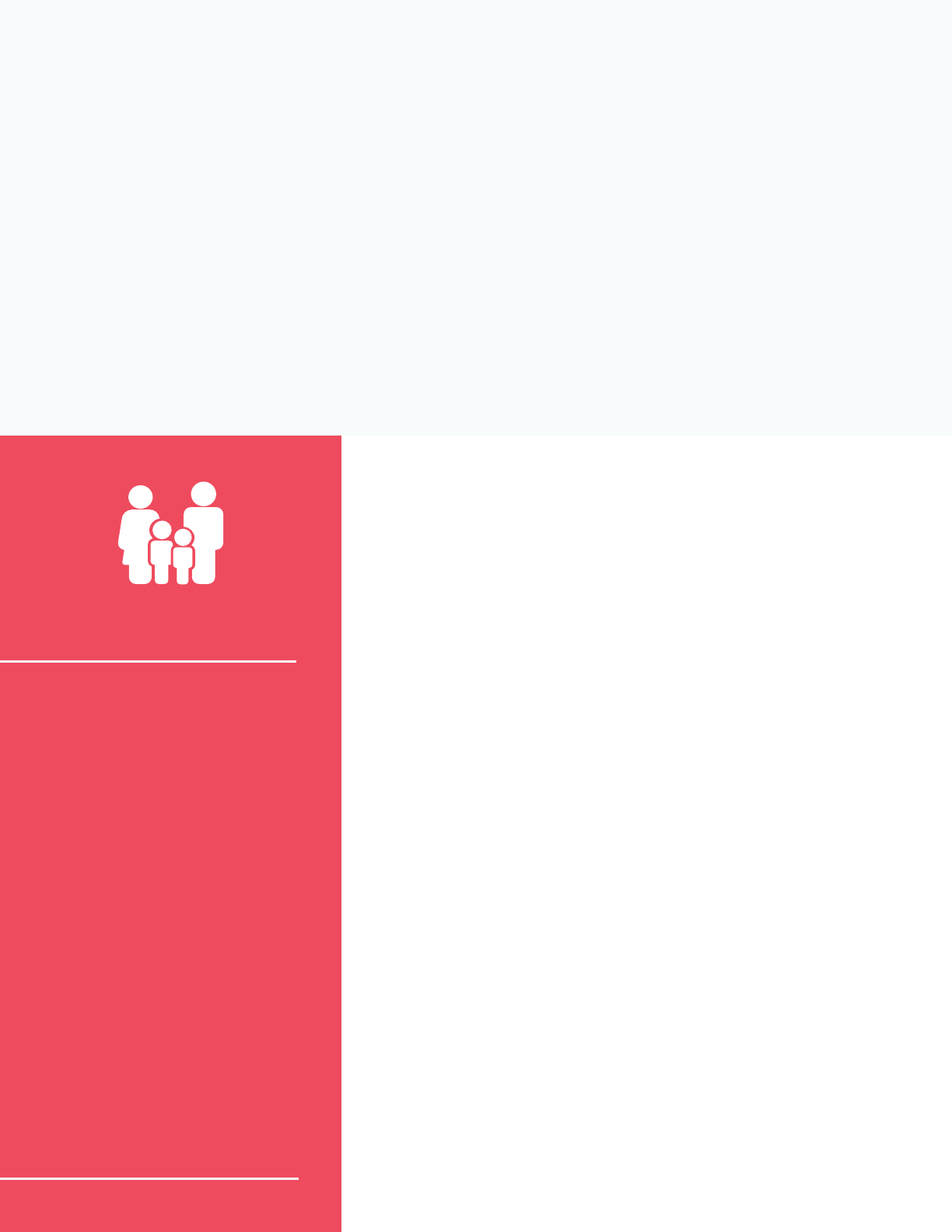
EXECUTIVE SUMMARY
Small businesses are the backbone of any community, but they are often the most vulnerable
to changing economic circumstances. To help owners survive and thrive, Maricopa County
established several small business assistance programs during the pandemic. Using ARPA
funds, the small business resilience program administered more than $30 million in grants
to 1,354 small or micro-sized businesses. These businesses were diverse geographically and
demographically, aligning with our overall goal of equitable distribution of ARPA funds.
SMALL BUSINESS SUPPORT
In a crisis, nonprots provide vital services that
governments simply can’t. But who helps the helpers?
Using ARPA funds, Maricopa County established a nonprot
assistance program to give social service providers
additional resources to meet the growing needs of the
community. These programs included assistance for children,
seniors, individuals with disabilities, domestic violence
survivors, people experiencing homelessness, and more. In
all, 332,443 individuals received life-enhancing services as a
result of the county’s nonprot assistance program.
Maricopa County also recognized a substantial increase in
food insecurity in the region. To address this challenge, the
Board allocated $1.3 million in ARPA funds to local food
banks which provided 2.4 million pounds of nutritious food
to support 40,413 people who didn’t know where they
would get their next meal.
During the pandemic, reports of domestic violence
increased. Many domestic violence shelters found
themselves short of the funding they needed to fully
support survivors. Maricopa County has spent $2.2 million
to cover funding gaps for trauma-informed domestic
violence shelters, ensuring survivors have a safe place to go.
NONPROFIT SUPPORT
332,443
40,413
$2.2M
INDIVIDUALS RECEIVED
LIFE-ENHANCING
SERVICES
PEOPLE SUPPORTED
WITH 2.4 MILLION
POUNDS OF
NUTRITIOUS FOOD
TO COVER
FUNDING GAPS FOR
TRAUMA-INFORMED
DOMESTIC VIOLENCE
SHELTERS
highlights
5

EXECUTIVE SUMMARY
Maricopa County is a great place to build a career and it’s why we’ve been ranked #1 for
attracting skilled workers two years in a row. Using ARPA funding, we’ve been able to expand
our workforce development efforts signicantly. By partnering with local organizations with
proven track records of success in job training and coaching, we’re giving individuals and
families upward mobility and helping in-demand industries get the skilled workers they need.
Partnerships include specic resources for:
• Justice-involved women
• Entry-level health care staff
• High school graduates or GED recipients
• Low income or disadvantaged individuals
JOB TRAINING & PLACEMENT
In direct response to the COVID-19 public health
emergency, Maricopa County continues to direct federal
dollars toward vaccines, testing, and personal protective
equipment with a focus on traditionally underserved
populations. As an example, from July 2021 through June
2022, we opened and operated a hotel that provided
15,450 people in Maricopa County a safe place to isolate
after testing positive for COVID-19. This program
successfully helped mitigate the spread of COVID-19 as
98.7% of guests completed their CDC-required isolation
period. Hotel staff provided additional support with
necessities such as daily meals, hygiene, over the counter
medication, formula, diapers, and transportation for
those in need. Many people served by this program were
disproportionately impacted by COVID-19, including more
than 13,400 refugees who were largely referred by the
Phoenix International Rescue Committee (IRC).
COVID-19 RESPONSE
highlights
15,450
98.7%
13,400+
PEOPLE WERE
PROVIDED A SAFE PLACE
TO ISOLATE AFTER
TESTING POSTITIVE FOR
COVID-19
OF GUESTS COMPLETED
THEIR CDC-REQUIRED
ISOLATION PERIOD
REFUGEES SERVED
6

Understanding the need for improved access to healthcare for residents with low income,
who are medically underserved or who may be uninsured, Maricopa County allocated more
than $45 million to improve the region’s healthcare infrastructure. The funds will be used
to develop new and renovated community health centers, replace outdated equipment, and
provide capital improvements that will help the County meet current and future public health
crises, as well as daily health care needs.
Additionally, through ARPA funding, we have been able to reopen 10 adult day care centers
and 18 senior centers across the region to support the health of these populations.
PUBLIC HEALTH INFRASTRUCTURE
EXECUTIVE SUMMARY
$45M
10
18
TO IMPROVE THE
REGION’S HEALTHCARE
INFRASTRUCTURE
ADULT DAY CARE
CENTERS REOPENED
SENIOR CENTERS
REOPENED
I am proud of the work we have done and the way we have communicated these
investments to the public. People in need can visit Maricopa.gov/Rescue to view a
list of assistance programs or Maricopa.gov/RescueFunds for an up-to-date look
at how taxpayer dollars are being spent. More details about ongoing projects
supported by ARPA funding can be found below.
CHAIRMAN BILL GATES, BOARD OF SUPERVISORS, DISTRICT 3
highlights
7

GENERAL OVERVIEW
USES OF FUNDS
PUBLIC HEALTH (EC 1)
Maricopa County, being one of the largest Counties in the United States, faced some of the
greatest public health impacts from the pandemic. To respond to these impacts the County is
devoting a substantial portion of SLFRF funds to address various public health impacts. For
example, in addition to the substantial funding for increasing COVID-19 vaccinations and
personal protective equipment, the County is devoting more than $20 million to research public
health equity and behavioral health consequences of the pandemic and plans to implement
evidence-based practices to address these issues. Additionally, the County recognizes that
aside from the direct public health impact of the pandemic, there are multiple underlying
County-wide issues which increase COVID’s impact on various populations. The County is
devoting substantial SLFRF monies for multiple projects aimed at addressing these underlying
and contributing factors such as lack of Home Care service workers and lack of available care
facilities.
NEGATIVE ECONOMIC IMPACTS (EC 2)
Maricopa County established multiple projects to assist low-income persons using these funds;
all of which are meant to address the negative economic impacts from the pandemic.
Specifically, the County established projects to assist low-income persons through eviction
prevention, workforce assistance, food assistance, burial assistance, and nonprofit provider
assistance. To prevent evictions the County projects using nearly $30 million for projects such
as direct payments to landlords with assurance of no eviction, legal services to prevent
evictions, navigation and application assistance for Emergency Rental Assistance, and longer-
term case management. To address the increasing issues of unemployment and
underemployment, the County set aside $25 million dollars for workforce assistance solutions
and is currently in the process of researching, defining, and developing a set of comprehensive
best-practice workforce assistance projects targeted to those most impacted by the pandemic
which will complement existing programs; allowing for a more robust workforce support system
County-wide. To address the County’s rising food insecurity the County is providing $3 million
to food banks County-wide to provide foods to low-income persons. Finally, the County
recognizes the important impact of various nonprofit providers in addressing local negative
economic impacts and plans to provide monies to various providers including adult day health
services and domestic violence providers to support the need for increased services and
address the increase cost to provide such services as a result of the pandemic.
8

GENERAL OVERVIEW
PUBLIC HEALTH-NEGATIVE ECONOMIC IMPACT:
PUBLIC SECTOR CAPACITY (EC 3)
Maricopa County is providing a variety of services to disproportionately impacted communities
maximize the recovery form the COVID-19 pandemic. The County has authorized and plans to
begin work on several key issues: housing, homelessness, care and support for seniors and
adults with disabilities, early education, and domestic violence. To address housing issues such
as lack of affordable housing and housing costs the County is in the process of contracting for
new affordable housing units and has begun housing support projects such as County-wide
landlord engagement and home emergency repairs for low-income persons. To address the
increase in homelessness the County is using monies for several projects including increasing
homeless shelter beds, rapid rehousing services, and continued COVID-19 isolation and
housing programs. To improve care for seniors and vulnerable adults the County is investing in
more case managers and providing monies to reopen senior centers that closed as a result of
the pandemic. To improve early education, the County is expanding the hours it can provide
Head Start and Early Head Start services at more than 25 locations County-wide. Finally, to
address the disproportionate impact the pandemic had on domestic violence services the
County is providing monies to expand domestic violence services County-wide including shelter
beds, financial and legal assistance, and community-based services.
PREMIUM PAY (EC 4)
Maricopa County has allocated monies to cover the cost of premium pay for County frontline
employees. Premium pay was provided for certain County Public Health and Safety positions
working within the jail and court systems where services must be provided regardless of the
pandemic.
INFRASTRUCTURE (EC 5)
Maricopa County will repair and maintain wastewater infrastructure and drinking water
infrastructure within the parks, recreation areas and County islands within urban and suburban
areas. With the overuse of parks and outdoor recreational areas, drinking water and
wastewater facilities have been overrun. Maintaining trails, updating drinking water pumps and
storage tanks, and adding new wastewater evapo-transpiration beds will help provide additional
upkeep needed for these areas within Maricopa County.
9

GENERAL OVERVIEW
On June 22nd, 2022 the Board of Supervisors also authorized $35.1 million to be used to help
deliver and/or enhance broadband coverage in the County.
REVENUE REPLACEMENT (EC 6)
Maricopa County will take advantage of the standard allowance of $10 million authorized in the
SLFRF Final Rule. The County intends to apply these resources to County Construction in
Process (CIP) Projects within the county government system.
PROMOTING EQUITABLE OUTCOMES
Maricopa County is dedicated to ensuring all SLFRF funds promote equitable outcomes.
Specifically, various projects such as human services projects for eviction assistance, housing
assistance, domestic violence reduction, and public health initiatives such as community health
equity, behavioral health, mobile vaccinations and the isolation hotel are designed to address
equity gaps. All the projects mentioned are geared towards populations that have been
historically marginalized, underserved, or otherwise adversely affected by the pandemic in
some way (e.g. low-income populations, homeless populations, people of color and domestic
violence survivors). To ensure the monies are used in an equitable manner the County used
robust data and internal reports to determine areas where significant numbers of people are
underserved and impacted by the pandemic.
To promote awareness of the services funded by the SLFRF the County is leveraging a variety
of existing partners including private businesses, nonprofit service providers, local government
agencies, and coalitions of providers such as food bank networks. These groups and
organizations have unique ties to the communities and residents they serve and will act as the
County’s primary mechanism to promote the services administered under SLFRF. Further, these
organizations will help ensure the greatest number of residents impacted by the pandemic
make use of these services.
To ensure the greatest access and distribution of services across Maricopa County, the County
is actively reducing the number of administrative barriers to obtaining services. This includes
implementing such practices as fact-based proxies, including Qualified Census Tracts, and other
governmental assistance program documentation, to ensure qualified persons obtain the
services that they are eligible for in the most efficient manner. Additionally, the County is
requiring its contractors provide services County-wide and in a way that places the least
possible administrative burden on residents allowing for the quickest access to necessary
services.
10

GENERAL OVERVIEW
The end result of these services is to create outcomes that close gaps in service and serve those
most disproportionately impacted by the pandemic including the low-income and marginalized
members of the County. These include measures such as provide housing to homeless
populations, vaccinating and protecting those most vulnerable to COVID-19, and preventing
further negative economic impacts from the pandemic.
PROMOTING EQUITY
Much of the work that Maricopa County has started and plans to conduct are primarily targeted
to promote economic equity. Some examples include providing nearly $40 million for housing
projects including affordable housing construction, emergency home repair, and landlord
engagement for low-income persons. Similarly, the County is dedicating nearly $20 million for
eviction prevention projects and $3 million for direct food assistance to low-income households
which are primarily geared to address economic equity gaps that have occurred or worsened by
the pandemic. Further, Maricopa County is helping to sustain equity initiatives by providing
more than $13 million in direct assistance to more than 80 nonprofit and community partners
that serve diverse groups and addressing inequities by assisting many groups of
disproportionately impacted persons.
SERVICES FOR DISPROPORTIONATELY
IMPACTED COMMUNITIES
The County, using various indicators, data, and internal reports determined multiple groups
were disproportionately impacted by the pandemic including seniors and adults with disabilities,
domestic violence survivors, and low-income parents who need childcare assistance. Through
SLFRF funding the County plans to take multiple actions to reduce the negative impact on
these communities such as by reopening senior centers and adult day health care centers,
increasing funding for domestic violence service providers County-wide, and increasing
childcare service hours at more than 25 Head Start and Early Head Start locations County-wide.
DESCRIPTION OF INTENDED OUTCOMES
Although many of the SLFRF funded projects are just starting, the County is dedicating a
significant amount of funding to promote equity. Intended outcomes range and are specific to
the project and include outcomes such as additional homeless persons housed, low-income
persons provided affordable housing, low-income persons able to avoid eviction, and food
insecure persons provided food support. Each of the projects will regularly collect and track
quantitative data on the impact of each project in terms of persons served with a focus on
disproportionately impacted persons served. More specifically, contracted services and
11

GENERAL OVERVIEW
internally provided services will be required to collect and track quantitative outputs and
outcomes of the work it performs to provide meaningful representations of the work
conducted. This data and information will be further targeted to ensure the projects and
programs promote equitable outcomes.
DESCRIPTION OF GEOGRAPHIC AND
DEMOGRAPHIC DISTRIBUTION OF FUNDING
SLFRF funds will be used to provide services County-wide, primarily to the most underserved
and marginalized Maricopa County residents. Specifically, the County is focusing its efforts on
vulnerable populations such as seniors, domestic violence survivors, and youth as well as low-
income populations who have been disproportionately impacted by the COVID-19 pandemic.
For each of the marginalized populations the County collects evidence that these populations
have been marginalized and/or disproportionately impacted by the pandemic before
establishing projects to assist them. Additionally, the County uses many different methods to
determine whether persons are low-income including the U.S. Department of Housing and
Urban Development’s (HUD) designated Qualified Census Tract method. The County
recognizes that both marginalized and low-income persons have been significantly impacted by
the pandemic and consistently strives to target SLFRF funds to assist those specific
populations.
COMMUNITY ENGAGEMENT
The County has used multiple forms of feedback and data to determine the projects it intends
to conduct. For example, the County used three comprehensive and detailed community
assessments to inform the key issues around housing and homelessness and inform how the
County should address them. These assessments (each required by agencies such as the
Department of Health and Human Services, Office of Head Start and HUD) use multiple
data/information sources including U.S. federal data, local community resident surveys, and
community partner surveys such as from Community Action Programs and local cities. The
County compiled this information and further researched best and promising practices to
address the key issues identified. Additionally, the County has taken various steps for project
planning to reach out to large stakeholders and groups such as coalitions to ensure the actions
taken by the County meets the needs of the community and serves those who are traditionally
underserved. Finally, the County is continuing to reach out to community stakeholders and
collect data from many local sources to inform its public health approaches.
12

GENERAL OVERVIEW
LABOR PRACTICES
The County ensures staff and contractors comply with Federal and State of Arizona labor
standards. Further, Maricopa County has a documented history of ensuring the best treatment
of workers and encourages prevailing wage requirements on its capital investment projects.
Maricopa County also encourages local hiring of workers to the greatest possible extent, and
ensures its contractors adhere to existing labor standards.
USE OF EVIDENCE
Maricopa County has a broad strategy to ensure SLFRF funds are used for well established,
defined, evidence-based interventions/programs that have a documented history of effectively
addressing issues they aim to solve. In many cases the projects and programs funded through
SLFRF funds directly impact and address the issue it aims to solve such as COVID-19
vaccinations or additional homeless shelter capacity and these projects provide immediate
results showing their impact and effectiveness. In other circumstances where projects are
funded based on model programs or strategies, such as domestic violence interventions, the
County conducts research on effective evidence-based approaches as well as consulting with
subject matter experts who have robust knowledge of the field to determine how and where to
use SLFRF funds. Finally, for all other cases that the County does not have research, expertise,
or direct evidence to show project success, the County is requiring projects to collect data on a
variety of outcomes which will inform and help build evidence for various approaches. The
County’s overall approach is to ensure evidence is used to inform project selection and use data
from the projects to build evidence of a project/program’s effectiveness.
PERFORMANCE REPORT
Maricopa County committed quickly to providing reasonable output and outcome measures for
many of our projects funded in whole, or in part, with SLFRF funds. The County has over
seventy projects now in our inventory. Along with mandatory performance indicators, many
projects have, or are designing, key performance indicators intended to show the efficacy of
public health and economic support investments. While recognizing the applicability of various
mandatory performance indicators, it's important to also recognize not all eligible uses fit
cleanly into these. Data gathering and analysis is ongoing. By applying continuous improvement
practices to performance, the County can Plan, Do, Check and Act.
13

PROJECT INVENTORY
PROJECT INVENTORY
PUBLIC HEALTH
COVID-19 MITIGATION & PREVENTION
COVID-19 VACCINATION
PROJECT
86ARPAVACC: COVID-19 Vaccination – ARPA
FUNDING AMOUNT
$4,344,854
FUNDING EXPENDITURE CATEGORY
1.1 COVID-19 VACCINATION
PROJECT OVERVIEW
• Supplement ongoing COVID-19 vaccination services for residents of Maricopa County
with continued targeted outreach to high-risk and hard to reach populations.
• Maricopa County is using monies to support COVID-19 vaccination services in the
community through MCDPH staff, multiple contracted vendors, and Medical Reserve
Corps (MRC) volunteer strike teams. Funds will be used to cover maintenance and
storage of vaccines, medical supplies, mobile vaccine clinic fuel, and temporary staff to
perform data entry, vaccine transport, and logistical support.
• Certain expenditures for vaccinations originally posted to CARES resources were moved
to this project.
PROJECT DEMOGRAPHIC DISTRIBUTION
• General Public
• Historically underserved communities face increased barriers to accessing quality
healthcare, which includes vaccinations. Maricopa County residents who face racial
inequities and poverty are high-risk to the disastrous consequences of COVID-19.
Maricopa County will continue to perform regular gap analyses and monitor current
outbreak trends as well as demographic data to determine geographical areas that need
targeted outreach.
USE OF EVIDENCE
14

PROJECT INVENTORY
It is well-documented that vaccination strategies targeted for hard-to-reach and high-risk
populations increase access to vaccinations. CDC produced guidance documents on best
practices and key operational considerations for vaccination services. These operational
guidelines, which include guidance on site selection, community outreach and forming critical
partnerships will be used to optimize and maximize vaccination efforts in Maricopa County.
PERFORMANCE REPORT
Output:
• Vaccine doses.
Outcome:
• Reduced numbers of infections and severity of symptoms.
COVID-19 TESTING
PROJECT
26ARPATEST: ARPA COVID Testing
FUNDING AMOUNT
$35,038,942
PROJECT EXPENDITURE CATEGORY
1.2 COVID-19 Testing
PROJECT OVERVIEW
• Provide testing services for COVID-19 as required for public health investigation and
protection from COVID-19.
• Maricopa County Correctional Health COVID testing specifically in the County Jails.
PROJECT DEMOGRAPHIC DISTRIBUTION
• Disproportionately Impacted other households or populations that experienced a
disproportionate negative economic impact of the pandemic.
• General Public
USE OF EVIDENCE
This section is not applicable per Treasury Reporting Guidance.
PERFORMANCE REPORT
Output:
15

PROJECT INVENTORY
• Testing provided to help ensure inmates are given proper treatment if tested positive
with COVID-19.
Outcome:
• Number of inmates in the County Jail tested for COVID-19.
COVID-19 CONTACT TRACING
PROJECT
86ARPACT: Contact Tracing
FUNDING AMOUNT
$2,750,000
PROJECT EXPENDITURE CATEGORY
1.3 COVID-19 Contact Tracing
PROJECT OVERVIEW
The Contact Tracing program will continue supporting disease investigations of positive
COVID-19 case reports in Maricopa County. This includes the determination of close contacts
as well as isolation and quarantine guidance to cases and contacts.
PROJECT DEMOGRAPHIC DISTRIBUTION
• General Public
• The service and activity are based on notification of a laboratory confirmed positive test
and not on demographics. However, demographic data are collected on those testing
positive to determine if groups or subsets of the community are more at risk or are being
affected more often.
USE OF EVIDENCE
No specific evidence-based interventions are used for this program. Infected individuals and
contacts are identified and provided information to help prevent further spread of the disease.
This information drives the modification and/or addition of mitigation strategies.
PERFORMANCE REPORT
This program has not yet started under ARPA funding. Below are the performance major measures
that will be collected for the program:
Output:
• Number of positive case notifications completed.
16

PROJECT INVENTORY
Outcome:
• Percentage of positive cases (with contact information) notified within one (1) business
day.
PERSONAL PROTECTIVE EQUIPMENT
PROJECT
86ARPAPPE: ARPA PPE
FUNDING AMOUNT
$8,993,279
PROJECT EXPENDITURE CATEGORY
1.5 Personal Protective Equipment
PROJECT OVERVIEW
As part of ongoing COVID-19 response, Maricopa County is using funds to store and distribute
personal protective equipment. This includes maintaining logistics, warehousing staff and
services to support the maintenance, provision and processing requests of COVID-19 PPE and
disease mitigation supplies for the ongoing pandemic response. MCDPH has established an
inventory of the five most typically used PPE items (masks, gloves, goggles, gowns, face shields)
to assist facilities that are unable to meet their own resupply needs and are in an outbreak
status.
PROJECT DEMOGRAPHIC DISTRIBUTION
• General Public
• This project provides PPE to different facilities across Maricopa County, including those
serving disproportionately impacted populations such as Long-Term Care Facilities
(LTCF) and homeless shelters. These groups have seen 23% of all COVID related deaths
in Maricopa County and this service directly impacts higher risk groups: congregate care
settings and older adults.
USE OF EVIDENCE
No evidence-based interventions are required for this program. However, the need for
universal masking in congregate settings and use of other appropriate PPE has been
demonstrated in studies as the most highly effective disease mitigation strategy.
PERFORMANCE REPORT
17

PROJECT INVENTORY
• The logistics response program has been successful in the deployment of millions of
items of PPE across the county since the start of the response. Through partnerships
within Public Health and the community, a user-friendly ordering system was
implemented. This system allowed for easy ordering from the requestor as well as the
ability to provide a prompt follow up to the requestor from Public Health. The Logistics
Team overseeing PPE distribution has created a strong foundation for communicating
within the community to better understand PPE needs. This allows for a better handle
on the current incident as well as prevention of future PPE shortages.
• During the period of July 1, 2021 to June 30, 2022, MCDPH processed 2,228 orders
across 549 facilities. 28 different types of facilities were reached such as schools and
behavioral health facilities, including 551 orders processed for long term care facilities
and 105 orders for assisted living facilities. Distribution to these facilities directly
impacted older adults in congregate settings, who were high risk and disproportionately
impacted by COVID-19. Overall, the process for managing and fulfilling PPE needs in the
community has proven successful with 97.7% of requests completed.
Output:
• Number of orders processed: 2,228
• Number and type of facilities served: 549 facilities and 28 different types
Outcome:
• Percent of requests completed: 97.7%
MEDICAL EXPENSES (INCLUDING ALTERNATIVE CARE FACILITIES)
PROJECT
47ARPACCR: County COVID Response
FUNDING AMOUNT
$1,085,020
PROJECT EXPENDITURE CATEGORY
1.6 Medical Expenses (Including Alternative Care Facilities)
PROJECT OVERVIEW
Provide medical expenses for COVID treatment and hospitalization.
PROJECT DEMOGRAPHIC DISTRIBUTION
General Public
18

PROJECT INVENTORY
USE OF EVIDENCE
This section is not applicable per Treasury Reporting Guidance.
PERFORMANCE REPORT
Output:
• Number of staff hired and trained for this project.
• Number of reports submitted for subject grants.
Outcome:
• Percent of grant billings reimbursed within 45 days of billing submission.
PROJECT
86ARPADEMC: Dementia Caregiver
FUNDING AMOUNT
$380,000
PROJECT EXPENDITURE CATEGORY
1.6 Medical Expenses (Including Alternative Care Facilities)
PROJECT OVERVIEW
• Support dementia caregivers through a multifaceted approach with community-based
partnerships by increasing opportunities for education, support, respite and socialization.
• This program involves educational workshops, support groups, mentor programs,
trainings, respite vouchers and staffing assistance for ongoing specialized activities.
PROJECT DEMOGRAPHIC DISTRIBUTION
• General Public
• Arizona ranks among the highest on the list for new incidences of Alzheimer’s and
dementia cases in the country. The rapid trajectory of new dementia cases places
substantial physical, emotional, and financial burdens on family caregivers in Maricopa
County. Burdens for family caregivers have increased during the COVID-19 pandemic,
with disproportionate impacts on families due to social determinants of health.
Partnering with well-known, community-based agencies that already coordinate
dementia caregiver services will allow a large-scale program that can better serve hard-
to-reach populations more efficiently.
USE OF EVIDENCE
19

PROJECT INVENTORY
Many of the programs, focus areas and trainings are built from resources and guidance in the
Best Practice Caregiver database, which guides organizations to dementia programs for family
caregivers.
PERFORMANCE REPORT
To date, MCDPH has overseen three grants with Duet Caregiver Services, the Arizona
Caregiver Coalition (ACC) and Banner Alzheimer’s Institute.
• Duet Caregiver Services held 21 support groups serving 187 attendees as well as
reactivated a caregiver peer mentor program that matched 12 new, struggling caregivers
with a Duet-trained caregiver. Duet was also able to create virtual educational webinars
on topics such as nutrition and resiliency with 305 participants. Additionally, they
developed a 10-session discussion series in English and Spanish for dementia caregivers,
Finding Meaning and Hope, with 161 participants including 44 in Spanish. 95% of survey
respondents reported that Finding Meaning and Hope reduced their level of stress and
100% reported that group discussions were helpful.
• The Arizona Caregiver Coalition used funds for reimbursement payments for family
caregivers needing respite. Family caregiving is an important contribution to the care of
older adults and persons with disabilities, and respite can reduce caregiver burden and
help ensure continuation in their role. Success for the program is measured in two ways:
making a payment to the caregiver is the first success indicator and then client
satisfaction is measured. 23 clients were served and 54 respite vouchers were provided.
All survey respondents reported high levels of satisfaction with the service, indicating
that being able to use respite improved their lives and ability to care for a loved one.
• The Banner Alzheimer’s Institute (BAI) used funds to expand their Dementia Friendly
efforts to raise awareness and lower stigma of dementia through creating Dementia
Friends, Dementia Champions and establishing Memory Cafes. The Dementia Caregiver
Alliance (DCA) mini grant contributed to the overall expansion of the BAI Dementia
Friends, Dementia Champions and virtual Memory Café which saw cumulative
participation beyond solely the scope of this grant over the last year of 1045 new
Friends, 101 trained Champions and 152 participants hosted in the virtual Café.
Cumulative participant pre and post confidence ratings scale (N=85) yielded a 29%
improvement in confidence in knowledge and understanding of dementia after the
Dementia Friends programs. Caregiver and participant satisfaction surveys remain high
at 95%. Due to the Memory Café virtual participation, it has been difficult to adequately
assess caregiver stress and burden. N-75 participants were surveyed and 94% reported
an elevated awareness of resources in their community for those living with Dementia
from participating in the program. Some caregivers have described the program as a “life
saver.” Overall, these programs have made a huge impact on people and families living
with dementia as they have been exponentially more isolated in pandemic conditions.
With a specific focus in this grant on reaching Hispanic, Native American, and Black
20

PROJECT INVENTORY
caregivers, two new podcasts episodes were launched earlier this year: The Hispanic
Perspective and Alzheimer’s disease with 652 plays and Cultural Awareness: The Black
Perspective with 360 plays.
Output:
• Number of caregivers served: variable measures, see above.
Outcome:
• Percentage of caregivers reporting improvements at least two of four key areas: stress,
resiliency, health and awareness: All 3 programs (100%) reported improvements in at
least 2 areas.
OTHER COVID-19 PUBLIC HEALTH EXPENSES (INCLUDING
COMMUNICATIONS, ENFORCEMENT, ISOLATION/QUARANTINE)
PROJECT
86ARPAISO: Isolation Hotel
FUNDING AMOUNT
$15,661,141
PROJECT EXPENDITURE CATEGORY
1.7 Other COVID-19 Public Health Expenses (Including Communications, Enforcement,
Isolation/Quarantine)
PROJECT OVERVIEW
• Provided isolation or quarantine housing and wrap-around services for persons testing
positive or exposed to COVID-19.
• Maricopa County has used monies as part of ongoing COVID-19 response to continue
isolation hotel services in the community. Contracted services through multiple vendors
include site management, housing, food, cleaning, laundry, security, and transportation
services for persons testing positive for COVID-19 and/or for persons exposed to a
person testing positive for COVID-19.
PROJECT DEMOGRAPHIC DISTRIBUTION
• General Public
• Individuals and families from low socioeconomic, underserved and marginalized
communities often face barriers to isolating from others when testing positive for
COVID-19. Examples of barriers include inadequate space in the home to isolate from
other family members and the inability to afford food delivery. This project addressed
21

PROJECT INVENTORY
these inequities by providing a safe space to isolate or quarantine for those testing
positive for or exposed to COVID-19 until they were no longer contagious per CDC
guidelines.
USE OF EVIDENCE
CDC guidelines recommend that those positive for COVID-19 and their close contacts isolate
or quarantine from others during their infectious period. Those who are homeless and those
living in crowded conditions are often unable to isolate per guidelines and are thus more likely
to spread COVID-19. By providing isolation housing and services, these individuals had access
to a place to isolate or quarantine properly and avoid spreading COVID-19 in their homes and
communities.
PERFORMANCE REPORT
During the operational period of July 1, 2021 to June 30, 2022, the Isolation Hotel served over
15,450 people in Maricopa County and provided a safe place for individuals and families who
tested positive for COVID-19. This program successfully helped mitigate the spread of COVID-
19 as 98.7% of guests completed their CDC-required isolation period. The hotel staff provided
additional support with necessities such as daily meals, hygiene, over the counter medication,
formula, diapers and transportation for those in need. Many people served by this program
were disproportionately impacted by COVID-19. This included serving over 13,400 refugees
who were largely referred by the Phoenix International Rescue Committee (IRC).
Output:
• Number of individuals served: 15,450
Outcome:
• Percent of individuals who complete their CDC-required isolation period at the hotel:
98.7%
COMMUNITY VIOLENCE INTERVENTIONS
PROJECT
19ARPADVPG: Diversion Programming
FUNDING AMOUNT
$3,530,000
PROJECT EXPENDITURE CATEGORY
1.11 Community Violence Interventions
22

PROJECT INVENTORY
PROJECT OVERVIEW
• Maricopa County Attorney’s Office diversion programs are defendant self-pay. This is a
barrier for defendants, even more so with economic impact of COVID, and resulting
joblessness in this population. ARPA is used to offset eligible defendants’ diversion
assessment, treatment and drug testing costs.
• The negative economic impact of COVID has impacted defendants’ ability to pay for
services. The Diversion Strategies Group (DSG) has developed a Sliding Scale of how
providers will be reimbursed for assessment and treatment costs based upon
defendant’s family size and income. Defendants who are enrolled in Medicaid, known as
the Arizona Health Care Cost Containment System (AHCCCS), or who have a family
income greater than 232% of the federal poverty level will not be eligible for ARPA
funding. The treatment providers will work with the respective defendants to determine
if they are eligible for AHCCCS or for ARPA reimbursement and which ARPA discount
category (ranging from 25% to 75%) is appropriate.
• Eligibility requirements are based upon 2022 Federal Poverty Guidelines, offering
discounts of 25-75% for treatment costs using Sliding Scale, thereby reducing financial
barriers to diversion completion.
• The approximate timeline is March 2022 through June 2023.
• The DSG contracts with three community-based behavioral health providers: La
Frontera Empact, SAGE Counseling Inc. and Southwest Behavioral and Health Services
for assessment and treatment services, and two drug testing providers: Averhealth and
Genotox.
• The DSG has established intended outcomes by provider. These outcomes include:
o the number of Animal Cruelty, Domestic Violence Excessive Response and Felony
Diversion Program defendants who received ARPA funds for assessment and/or
treatment services;
o the number of Developmental Disability and Serious Mental Illness-Felony
Diversion Program defendants who received ARPA funds for assessment and/or
treatment services;
o the number of Parenting Skills and Veterans Diversion program defendants who
received ARPA funds for assessment and/or treatment services;
o the total number of Diversion program defendants who received ARPA funds for
assessment and/or treatment services;
o the total number of Felony Diversion Program and Veterans Diversion Program
defendants who received ARPA funds for drug testing;
o the total number of Justice Court Diversion program defendants who received
ARPA funding.
• View the website of the project.
PROJECT DEMOGRAPHIC DISTRIBUTION
23

PROJECT INVENTORY
• General Public
USES OF EVIDENCE
• This project has two goals to assist financially challenged defendants who have been
offered diversion - first, to offset their assessment costs, and second, to pay their
ongoing treatment and drug testing (if required) costs, thus increasing defendant
participation and diversion success rates.
• All the diversion programs are based upon research evidence. Furthermore, the largest
diversion program (Felony Diversion Program) is undergoing two program evaluations in
2022: one evaluation effort involves the Correctional Program Checklist, and another
involves the use Propensity Score Matching by two outside academic evaluators to
compare the outcomes associated with defendants who successfully and unsuccessfully
completed that program in 2021.
PERFORMANCE REPORT
Output:
1. The number of months when the Felony Diversion Program successful completions met
or exceeded the Target value.
2. The number of months when the Justice Court successful completions met or exceeded
the Target value.
3. The number of months when the Serious Mental Illness-Felony Diversion Program
successful completions met or exceeded the Target value.
4. The number of months when the Domestic Violence Excessive Response successful
completions met or exceeded the Target value.
5. The number of months when the percentage of Animal Cruelty successful completions
met or exceeded the Target value.
Outcome:
• Defendants will no longer be required to fully self-pay for diversion treatment services.
These services address the defendant’s unlawful conduct and lessen the significant
consequences of a criminal conviction, such as barriers to employment and housing.
PROJECT
22HSARPADA: Legal and Counseling Services, Community-based Services, and Financial
Assistance to Domestic Violence Survivors
FUNDING AMOUNT
$10,000,000
PROJECT EXPENDITURE CATEGORY
24

PROJECT INVENTORY
1.11 Community Violence Interventions
PROJECT OVERVIEW
Maricopa County has provided monies for domestic violence service providers County-wide to
conduct a variety of domestic violence intervention services. Domestic violence service
providers in the State have reported a significant increase in need for domestic violence
services as a result of the COVID-19 pandemic. Additionally, more recent research and federal
guidance indicates domestic violence interventions should be based on trauma-informed
approaches. As a result, the County will provide monies to service providers using trauma-
informed approaches to domestic violence interventions including legal and counseling services,
community-based services, and financial assistance to domestic violence survivors. Further, the
County will provide additional monies to support domestic violence shelter services, for which
demand has grown as a result of the pandemic.
PROJECT DEMOGRAPHIC DISTRIBUTION
• Disproportionately Impacted other households or populations that experienced a
disproportionate negative economic impact of the pandemic.
• This project primarily serves disadvantaged communities. Specifically, this project will
focus on providing services to a disproportionately impacted group (domestic violence
survivors). Substantial data indicates these individuals lack the resources to obtain
shelter, legal, counseling, and other assistance necessary to address their domestic
violence situations.
USE OF EVIDENCE
The goals of this project are to improve direct service to domestic violence survivors by
increasing the availability of funding providers can use for financial assistance, legal assistance,
shelter services, and trauma-informed community-based practices. The federal agency,
Substance Abuse and Mental Health Services, has more recently been promoting and
publishing resources for using a trauma informed approach which includes community-based
interventions. Further, Phillips, Lyon, Fabri, and Warshaw (2015) National Center on Domestic
Violence, Trauma, and Mental Health published a report Promising Practices and Model
Programs: Trauma-Informed Approaches to Working with Survivors of Domestic and Sexual
Violence and Other Trauma detailing best practices for trauma-informed domestic violence
services such as home visitation, which shall be used for this project.
PERFORMANCE REPORT
Output:
• Hours of service provided by service type (36,621 total)
o Community-based services: 3,834
25

PROJECT INVENTORY
o Shelter services: 31,240
o Legal services: 1,034
o Counseling services: 216
o Financial assistance hours: 50
o Other services: 247
Outcome:
• Number of unique clients (survivors and household members) served by service type
(45,486 total)
o DV Hotline/Helpline: 2,072
o Community-based services: 43,928
o Shelter services: 946
o Legal services: 313
o Counseling services: 167
o Financial assistance hours: 50,132
BEHAVIORAL HEALTH
MENTAL HEALTH SERVICES
PROJECT
86ARPASCNA: Mental Health Services
FUNDING AMOUNT
$19,700,000
PROJECT EXPENDITURE CATEGORY
1.12 Mental Health Services
PROJECT OVERVIEW
• The negative impacts of COVID-19 pandemic have led to an increased need for
additional behavioral health facilities and services in Maricopa County. MCDPH is
distributing funds to Valleywise Health, a direct provider of inpatient and outpatient
behavioral health services to residents across Maricopa County, including in medically
underserved areas. Valleywise Health is using ARPA funds to create additional capacity
for serving SMI individuals in the West and East Valley.
• In the West Valley, an SMI Direct Care outpatient clinic and Assertive Community
Treatment program will be established within vacant space of the Maryvale Hospital. An
additional court room space will also be built at the Valleywise Behavioral Health Center
26

PROJECT INVENTORY
– Maryvale to conduct proceedings for court-ordered evaluations related to treatment
of persons with mental illness and other behavioral health services.
• In the East Valley, the Mesa (Desert Vista) Behavioral Health Center will be expanded.
This will require 1) relocating the existing SMI clinic from the Mesa Comprehensive
Health Center to the Mesa (Desert Vista) Behavioral Health Center once remodeling is
complete and 2) opening an East Valley First Episode Center within the Mesa
Comprehensive Health Center in space formerly occupied by the SMI Specialty Clinic.
PROJECT DEMOGRAPHIC DISTRIBUTION
• General Public
• SMI care clinics provide services to people designated at severely mentally ill, who are
often low-income, marginalized and disproportionately impacted by COVID-19.
Unemployment, housing instability and food insecurity are just a few of the risk factors
worsened by the COVID-19 pandemic that increase poor outcomes for people
experiencing mental and behavioral health issues. This goal of this project is to increase
capacity in different geographical locations across Maricopa County to better serve
communities in need of behavioral health services in Maricopa County.
USE OF EVIDENCE
This section is not applicable per Treasury Reporting Guidance.
PERFORMANCE REPORT
• As of July 2022, 4 projects under Valleywise have been approved by Maricopa County
Special Health Care District Board of Directors. Contract negotiations with design and
construction vendors are in progress for the Mesa and Maryvale projects. Construction
cost will include cost for 0.5 FTE for a project manager who would manage projects at
Mesa and Maryvale sites. Purchase orders have been issued, but no funds have been
invoiced at this time. Please see below for site-specific project status:
• Mesa: Project began in May 2022. Site walk was conducted with the architect and
engineers for preliminary review of utility requirements for the new facility. Design to
start as soon as contract is established. Tentative projected construction completion by
October 2023. The licensing and activation will happen at close of construction.
• Maryvale: The SMI Direct Care outpatient clinic project is expected to start in
September 2023 with a tentative completion date in February 2024. The licensing and
activation will happen at close of construction. The Maryvale Court project was
approved in March 2022 and is currently in progress with a projected completion date in
Sept. 2022.
Output:
27

PROJECT INVENTORY
• Number and type of projects: 4 medical facilities capital projects
• Timeline for each capital project: See above
Outcome:
• Description for improved services: TBD
PROJECT
86ARPASMT: Substance Use and Mental Health Data Trend Analysis
FUNDING AMOUNT
$830,000
PROJECT EXPENDITURE CATEGORY
1.13 Substance Use Services
PROJECT OVERVIEW
The COVID-19 pandemic exacerbated the pre-existing opioid epidemic and likely had long-
lasting impact to our collective mental health. A group of MCDPH epidemiologists and disease
investigators will continue to monitor trends of substance use and mental health within
Maricopa County. They will continue to support data requests from partners, develop up-to-
date community dashboards, and maintain situational awareness of conditions of concern (e.g.,
deaths by suicide). They have established processes to interview those who have experienced
a non-fatal overdose and connect them to resources. They are currently working on developing
a plan to support the MC Suicide Mortality Review Board.
PROJECT DEMOGRAPHIC DISTRIBUTION
• General Public
• Health response to disproportionately impacted populations.
USE OF EVIDENCE
No funds allocated to evidence-based interventions.
PERFORMANCE REPORT
This is a newly established program and the key performance indicators are in the process of
being established.
Output:
• TBD
Outcome:
• TBD
28

PROJECT INVENTORY
SUBSTANCE USE SERVICES
PROJECT
11ARPASAT: Substance Abuse Testing
FUNDING AMOUNT
$1,100,000
PROJECT EXPENDITURE CATEGORY
1.13 Substance Use Services
PROJECT OVERVIEW
• This project is mitigating the cost of required substance use testing for individuals on
probation or those with a Family Court matter.
• Individuals struggling with substance use disorder often face financial
instability. Reducing or eliminating the cost of testing allows the individual to focus on
recovery and other socially supportive services.
• The County has partnered with Averhealth, an industry leader in substance us disorder
monitoring.
• The project is expected to run through December 2024.
PROJECT DEMOGRAPHIC DISTRIBUTION
• General Public
• Other households or populations that experienced a negative economic impact of the
pandemic
USE OF EVIDENCE
The County’s required substance abuse testing is evaluated for efficacy, but this specific
allocation does not directly fund any changes to our evaluation practices. None of the money
allocated to this project are specifically dedicated to evidence-based interventions.
PERFORMANCE REPORT
Output:
• Substance use monitoring
Outcome:
• The cost of 8,383 tests administered to 3,919 clients has been covered.
29

PROJECT INVENTORY
OTHER PUBLIC HEALTH SERVICES
PROJECT
22SDARPAAC: Support recruitment and retention of Home Care Agency Caregivers
FUNDING AMOUNT
$4,000,000
PROJECT EXPENDITURE CATEGORY
1.14 Other Public Health Services
PROJECT OVERVIEW
Maricopa County is using monies to support a two-year project for improving the recruitment
and retention of Home Care Agencies’ caregivers. The County is accomplishing this by creating
and implementing strategies (as evidence by research and best practice) to provide monies to at
least 15 of the 27 licensed Home Care Agencies in Maricopa County to improve the
recruitment and retention of their caregivers. During the pandemic there was a significant
decrease in caregivers (direct service providers) who provide critical services to the elderly and
adults with disabilities. The pandemic coupled with the low wages many caregivers receive
further decreased the number of caregivers available in the County, increasing the health risks
of many vulnerable adults. From approximately September until April 2022, the County will
fund research into evidence-based (feasible) recruitment and retention strategies for Home
Agency direct service workers. After April 2022, the County will begin funding efforts to
increase the recruitment and retention of these caregivers. By increasing the number of
caregivers within the County there will be expected improvements in the health and quality of
life for many vulnerable County residents.
PROJECT DEMOGRAPHIC DISTRIBUTION
• Non-Profits that experienced a negative economic impact of the pandemic.
• This project will focus on improving the health and well-being of seniors and adults with
disabilities who have been severely disadvantaged by the pandemic. Although, the goal is
to improve recruitment and retention of direct service workers, the end result is that
there will be much greater care for seniors allowing for better health and quality of life.
USE OF EVIDENCE
This section is not applicable per Treasury Reporting Guidance.
PERFORMANCE REPORT
30

PROJECT INVENTORY
Output:
• Research-based programs for improving recruitment and retention that the County
funds: None. Project was put on hold due to contractor staffing problems. To be
resumed in FY23.
• Amount of monies provided to increase recruitment and retention of home care agency
caregivers. $105,300 to date.
Outcome:
• Outcome: Number of new caregivers hired within Maricopa County. Outcome tracking
put on hold because of database and staffing issues, to resume in FY23.
• Outcome: Improved caregiver retention as measured by additional months working at
current caregiver agency. Project put on hold. See above.
PROJECT
22SDARPABC: Biohazard Cleaning for Vulnerable Adults
FUNDING AMOUNT
$600,000
PROJECT EXPENDITURE CATEGORY
1.14 Other Public Health Services
PROJECT OVERVIEW
Maricopa County will provide monies for the purpose of coordinating and administering
(providing) biohazard cleans for vulnerable adults including the elderly and adults with
disabilities. The program is expected to conduct at least 12 biohazard cleans annually across the
County for these vulnerable adults. Biohazard cleans vary in size and scope and can involve a
range of activities including removing waste, mold, and other dangerous substances which pose
health risks to homeowners. Due to the individualized scope, each biohazard clean may vary
significantly. The County will continuously track expenditures and performance to ensure
monies are used efficiently and equitably. Finally, this project will coordinate services with the
State of Arizona’s Adult Protective Services program to ensure that those adults suffering from
abuse or neglect are prioritized.
PROJECT DEMOGRAPHIC DISTRIBUTION
Impacted low-or-moderate income households or populations.
USE OF EVIDENCE
This section is not applicable per Treasury Reporting Guidance.
31
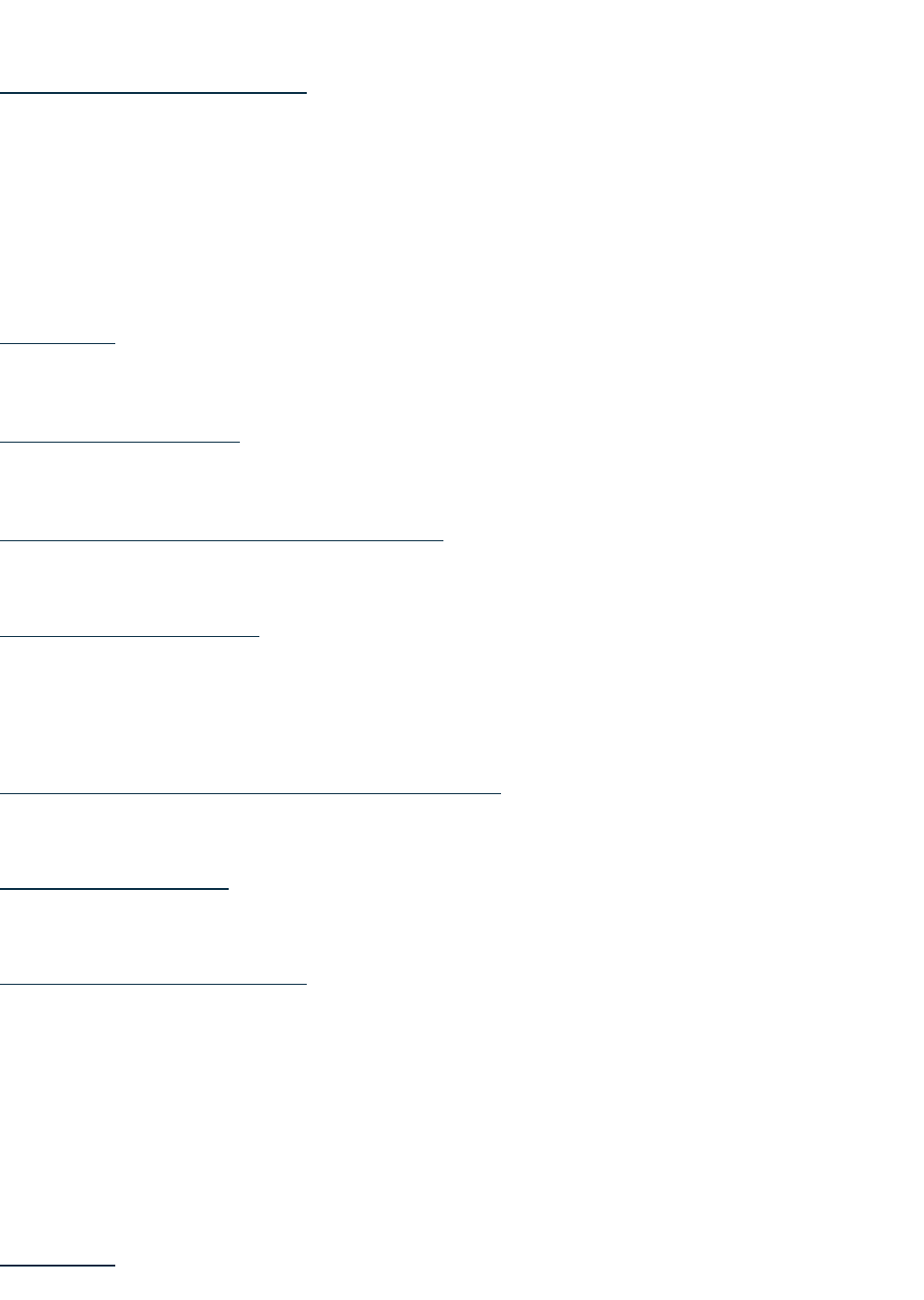
PROJECT INVENTORY
PERFORMANCE REPORT
Output:
• Number of biohazard cleaning projects completed. 2
• Average cost per Biohazard clean. $4,435
Outcome:
• Number of seniors and adults with disabilities that are provided with biohazard cleaning
services allowing improving their safety and quality of life. 4
PROJECT
86ARPAHRC: Building Healthy and Resilient Communities
FUNDING AMOUNT
$1,000,000
PROJECT EXPENDITURE CATEGORY
1.14 Other Public Health Services
PROJECT OVERVIEW
This program will support the development of strategies and interventions that address
systemic barriers and potentially discriminatory practices during the COVID pandemic that
increased the disparity gap for vulnerable and underserved populations.
PROJECT DEMOGRAPHIC DISTRIBUTION
General Public
USE OF EVIDENCE
This section is not applicable per Treasury Reporting Guidance.
PERFORMANCE REPORT
This is a newly established program and the key performance indicators are in the process of
being established.
Output:
• TBD
Outcome:
• TBD
PROJECT
22HDARPAWR: Weather Relief
32

PROJECT INVENTORY
FUNDING AMOUNT
$2,500,000
PROJECT EXPENDITURE CATEGORY
1.14 Other Public Health Services
PROJECT OVERVIEW
Funding will provide weather relief emergency shelter for individuals who are unsheltered
and/or experiencing homeless during the summer and winter months.
PROJECT DEMOGRAPHIC DISTRIBUTION
Impacted households that experienced increased food or housing insecurity.
USE OF EVIDENCE
This section is not applicable per Treasury Reporting Guidance.
PERFORMANCE REPORT
This program has not started. Performance measures are in development.
Output:
• TBD
Outcome:
• Number of individuals served
PROJECT
86ARPAEST: Enhanced Syphilis Treatment Services
FUNDING AMOUNT
$405,000
PROJECT EXPENDITURE CATEGORY
1.14 Other Public Health Services
PROJECT OVERVIEW
MCDPH has been the treatment provider for most outside community organizations in
Maricopa County that offer STD testing. This is because most community organizations offering
STD testing do not have a provider on staff and the treatment for Syphilis (Bicillin) is cost
33

PROJECT INVENTORY
prohibitive for most community organizations. During the pandemic, many community
organizations were closed during lock down and, since reopening, there has been an increase of
32% in treatments provided by the Public Health Clinic. These treatment encounters have
limited the number of patients that the PH Clinic can see for testing and treatment as the
demand for services continues to increase (patients presenting for services has increased 14%).
This program will increase capacity to meet the rising demand for STD treatments at MCDPH
Public Health Clinics.
PROJECT DEMOGRAPHIC DISTRIBUTION
General Public
USE OF EVIDENCE
This section is not applicable per Treasury Reporting Guidance.
PERFORMANCE REPORT
This is a newly established program and the key performance indicators are in the process of
being established.
Output:
• TBD
Outcome:
• TBD
PROJECT
86ARPARSTD: Rapid STD Test Kits (Mobile Testing)
FUNDING AMOUNT
$150,000
PROJECT EXPENDITURE CATEGORY
1.14 Other Public Health Services
PROJECT OVERVIEW
These funds will be used to purchase rapid test kits for STD testing in mobile clinics. Mobile
testing will increase the health response to disproportionately impacted populations and help
mitigate the spread of sexually transmitted infections. This will reduce the need to draw blood
specimens for patients served on the mobile units.
PROJECT DEMOGRAPHIC DISTRIBUTION
34

PROJECT INVENTORY
• General Public
• Mobile testing with rapid test kits allows for more targeted outreach to
disproportionately impacted populations based on zip codes and outbreak data. This
approach helps to mitigate the spread of sexually transmitted infections in the
community more effectively.
USE OF EVIDENCE
This section is not applicable per Treasury Reporting Guidance.
PERFORMANCE REPORT
This is a newly established program and the key performance indicators are in the process of
being established.
Output:
• TBD
Outcome:
• TBD
PROJECT
86ARPAPHCR: Public Health Community Recovery
FUNDING AMOUNT
$400,000
PROJECT EXPENDITURE CATEGORY
1.14 Other Public Health Services
PROJECT OVERVIEW
This program provides opportunities for existing or new programs to address shortfalls in
delivery of services to the community related to the impacts of the pandemic. This is essential
service "gap" funding will prioritize projects focused on serving disproportionately impacted
populations.
PROJECT DEMOGRAPHIC DISTRIBUTION
General Public
USE OF EVIDENCE
This section is not applicable per Treasury Reporting Guidance.
35

PROJECT INVENTORY
PERFORMANCE REPORT
This is a newly established program and the key performance indicators are in the process of
being established.
Output:
• TBD
Outcome:
• TBD
PROJECT
86ARPAACT: Adverse Childhood Training and Resources
FUNDING AMOUNT
$3,380,000
PROJECT EXPENDITURE CATEGORY
1.14 Other Public Health Services
PROJECT OVERVIEW
• MCPDH is committed to supporting the community with building systems that allow for
trauma-informed, social and emotional learning opportunities as well as linkages to care
that address the growing effect of Adverse Childhood Experiences (ACEs) on Maricopa
County youth and families. In recent research, ACEs has revealed the serious
implications for the county’s health future. According to the National Survey of
Children’s Health (2017) over one-quarter, 31.1% of children 0—17 years old in Arizona
have experienced 2 or more ACEs. This is significantly higher than the national average
(22.6%).
• This program involves training and educating leaders who work with youth to implement
trauma informed practices, creating resource libraries, and offering a linkages to care
model for families who may need additional emotional support. Additionally, as youth
educators are overworked in the face of COVID-19, this program will provide funds to
participants and educators with stipends to ensure high levels of commitment.
PROJECT DEMOGRAPHIC DISTRIBUTION
• General Public
USE OF EVIDENCE
This section is not applicable per Treasury Reporting Guidance.
36

PROJECT INVENTORY
PERFORMANCE REPORT
This is a newly started program with few measures to report. However, five major projects have
been identified: Youth Education Program, District and Schools Program, School Staff Program
and Community Organization Program, and the Resource Library. Over 20.5 hours of trainings
have been developed and 46 school sites have preliminarily signed up. There are also 2 new
youth focus groups. Key performance indicators are in development, but preliminary indicators
can be found below:
Output:
• Number of participants for each activity, number of locations, number of referrals.
Outcome:
• Percentage of referrals seeking care
• Percentage of participants reporting improvement (pending survey development)
• Percentage of outset goal reached
PROJECT
86ARPAVUN: Vaccines for Uninsured
FUNDING AMOUNT
$500,000
PROJECT EXPENDITURE CATEGORY
1.14 Other Public Health Services
PROJECT OVERVIEW
This program will increase access to vaccines for uninsured adults. The pandemic decreased
vaccination rates for preventable diseases due to the response needed to mitigate COVID-19.
Uninsured adults have increased difficulty accessing routine immunizations and are a vulnerable
population disproportionately impacted by the aftermath of COVID-19. This program will
increase access by purchasing and improving availability of vaccine for uninsured adults to
support a mission of bringing vaccination rates back to pre-pandemic levels in Maricopa
County.
PROJECT DEMOGRAPHIC DISTRIBUTION
• General Public
• Uninsured adults have increased difficulty accessing routine immunizations. This is a
vulnerable population that has been disproportionately impacted by the pandemic.
USE OF EVIDENCE
37

PROJECT INVENTORY
This section is not applicable per Treasury Reporting Guidance.
PERFORMANCE REPORT
This is a newly established program and the key performance indicators are in the process of
being established.
Output:
• TBD
Outcome:
• TBD
PROJECT
86ARPAWIC: WIC Service Enhancements
FUNDING AMOUNT
$2,000,000
PROJECT EXPENDITURE CATEGORY
1.14 Other Public Health Services
PROJECT OVERVIEW
ARPA funding will be used for the WIC Program to support WIC clinic building rent, payroll and
outreach programs. Those included in the payroll are the WIC Outreach Team, as well as some
members of the management team and support staff. The money is needed to continue to
provide WIC services across Maricopa County during transition to the County Public Health
buildings in the next two years. In addition, this money is needed to support outreach and
partnerships to recruit and retain all eligible WIC clients in the hardest to reach populations.
PROJECT DEMOGRAPHIC DISTRIBUTION
• General Public
USE OF EVIDENCE
This section is not applicable per Treasury Reporting Guidance.
PERFORMANCE REPORT
This is a newly established program and the key performance indicators are in the process of
being established.
Output:
38

PROJECT INVENTORY
• TBD
Outcome:
• TBD
PROJECT
86ARPAMVAC: Mobile Vaccination Vehicles
FUNDING AMOUNT
$1,000,000
PROJECT EXPENDITURE CATEGORY
1.14 Other Public Health Services
PROJECT OVERVIEW
Providing access to vaccinations and other routine preventative health services is an essential
part of keeping communities healthy. Maricopa County has purchased and is outfitting two
mobile health units to help support the delivery vaccinations and other services to the
community. Mobile vaccination clinics allow MCDPH to serve populations that otherwise have
difficulty getting access to care. It also allows for responding to needs such as outbreaks in a
targeted, more effective way.
PROJECT DEMOGRAPHIC DISTRIBUTION
• General Public
• Historically underserved communities face increased barriers to accessing quality
healthcare, which includes vaccinations. Limited access to vaccine clinics, lack of
transportation, mobility issues and work schedules are some of the obstacles that
Maricopa County residents face when seeking vaccinations. Maricopa County will
perform regular gap analyses and monitor current outbreak trends as well as
demographic data to determine geographical areas that need targeted outreach. Mobile
vaccination vehicles will increase access to these areas and increase access to
vaccinations for high-risk individuals.
USE OF EVIDENCE
It is well-documented that mobile vaccination strategies targeted for hard-to-reach and high-
risk populations increase access to vaccinations. The CDC produced guidance documents on
best practices and key operational considerations for mobile vaccination services. These
operational guidelines, which include guidance on site selection, community outreach and
forming critical partnerships will be used to optimize and maximize vaccination efforts in
Maricopa County.
39

PROJECT INVENTORY
PERFORMANCE REPORT
The two mobile health units were successfully purchased and are in the process of being
outfitted with a pushed back timeline of March 2023 due to supply chain.
Output:
• Status of vehicle purchase: Complete
• Timeline of mobile vehicle outfit: Projected completion date is March 2023
Outcome:
• Percent completion by funding end date
• Description of improved services
PROJECT
86ARPAPHCL: Public Health Clinic Locations
FUNDING AMOUNT
$29,000,000
PROJECT EXPENDITURE CATEGORY
1.14 Other Public Health Services
PROJECT OVERVIEW
• Maricopa County geographically covers 9,226 square miles and is home to over 4.5
million people with a rapidly growing population. The MCDPH operates a single clinic
location in the central region that has been unable to keep up with increasing demand
for services since the COVID-19 pandemic. Moreover, the pandemic has highlighted
gaps in serving communities in different regions of Maricopa County. Residents,
especially those facing socioeconomic barriers, need more access to care. To address
this, MCDPH is expanding clinic locations to different regions to provide more
community health services to all, regardless of economic status. To date, 3 PHS clinic
locations have been purchased in Goodyear, Glendale and Mesa. Additionally, research is
being conducted to site two additional locations.
• Capital expenditures were favored for clinic expansion as a prudent expenditure of
public funds due to the high cost of lease expenses coupled by the cost of leasehold
improvements that are required for medical facilities. The purchase of these facilities will
address regionalization in the most cost-effective manner and provide an answer to
emergency and disease control needs for many years to come.
40

PROJECT INVENTORY
• Programs offered at these clinics will include child and adult vaccinations, STD and TB
testing and treatment, nutrition services including WIC, Oral health service and Vital
Record Services.
PROJECT DEMOGRAPHIC DISTRIBUTION
• General Public
• Services are offered regardless of ability to pay. Most clients are Medicare eligible and
live below 200% of the federal poverty level. Clients are the most vulnerable to disease
as they are the demographic the least able to afford care.
USE OF EVIDENCE
This section is not applicable per Treasury Reporting Guidance.
PERFORMANCE REPORT
Two clinic locations were purchased with the first tranche of ARPA funding: Goodyear and
Glendale. The Goodyear location is in the architectural planning phase with a preliminary
projected completion date in December 2023. The Glendale location recently completed the
architectural planning phase and has moved to the permit stage with preliminary projected
completion in March 2023. A third clinic location is in the process of being purchased following
second tranche funding with a timeline in development. Research is also being conducted for
siting two additional clinic locations in the Northeast Valley and Central Valley.
Output:
• Number and type of each capital project: 3 medical facilities/clinic locations
• Timeline for each capital project: See above
Outcome:
• Percent completion for each project during established time frame.
• Description of improved services.
NEGATIVE ECONOMIC IMPACTS
ASSISTANCE TO HOUSEHOLDS
HOUSEHOLD ASSISTANCE: FOOD PROGRAMS
PROJECT
22HSARPAFA: Food Bank Support
41

PROJECT INVENTORY
FUNDING AMOUNT
$3,000,000
PROJECT EXPENDITURE CATEGORY
2.1 Household Assistance: Food Programs
PROJECT OVERVIEW
• Support food assistance operations and capital purchases necessary to provide food
assistance.
• Maricopa County will distribute monies to food banks and pantries that provide food
assistance to low-income and food insecure persons; all of whom were
disproportionately impacted by the COVID-19 pandemic. The project funds will be
distributed equitably among the major food assistance providers in the County.
Additionally, a portion of the funds will be used to expand research and client data
analysis capabilities to allow for more transparent and accurate data on how many
persons are served and where the greatest need is for food assistance. This data can
then be used to support future targeted food assistance programs.
PROJECT DEMOGRAPHIC DISTRIBUTION
• Households that experienced increase food or housing insecurity
• This project serves primarily disadvantaged communities. For example, the monies
distributed from this project will go towards food banks that serve low-income and food
insecure persons. Additionally, many of food banks these monies will go to are located in
low-income areas such as Qualified Census Tracts. USDA (2019) research found that
approximately 35% of food insecure persons, who are the primary recipients of these
services, are below the poverty line.
USE OF EVIDENCE
The goal of this project is to reduce food insecurity in the County by providing critical funding
to food banks to distribute food to food insecure persons. Bazwerghi, McKay, and Dunn (2016)
Journal of Community Health The role of food banks in addressing food insecurity: a systematic
review found that food banks play a critical role in reducing food insecurity and can be further
supported by better funding.
PERFORMANCE REPORT
Output:
• Amount of monies provided to buy and provide foods to food insecure persons:
$1,320,421
Outcome:
42

PROJECT INVENTORY
• Pounds of food provided to food insecure persons: 2,459,745
• Number of food insecure persons served with funding: 40,413
HOUSEHOLD ASSISTANCE: RENT, MORTGAGE AND UTILITY AID
PROJECT
22CDARPACM: Longer-Term Case Management & Self Support
FUNDING AMOUNT
$4,475,000
PROJECT EXPENDITURE CATEGORY
2.2 Household Assistance: Rent, Mortgage and Utility Aid
PROJECT OVERVIEW
The County plans to use funds to provide long-term case management for clients obtaining rent
and utility assistance through any of the programs the County administers. As a result of
COVID-19 the County has seen an increase in the amount of time staff have to devote to
various clients. More specifically, the County has found that many clients have ongoing and
complex issues (even after obtaining rent or utility assistance), and the County intends to
provide case managers who can work with these clients and provide long-term coaching and
case management to help them reach economic sustainability. These long-term case
management services will also be able to assist clients in obtaining other County-provided
and/or community-based services, such as workforce assistance and childcare/early education
assistance.
PROJECT DEMOGRAPHIC DISTRIBUTION
This project serves primarily disadvantaged communities by providing direct service to
households with low incomes. Further, this project aims to help those with more complex cases
and persons who may need additional supports to lift them out of poverty.
USE OF EVIDENCE
The main goal of this evidence-based project is to prevent evictions in the short-term and long-
term by hiring long-term case management services for those facing eviction due to COVID-19.
These long-term case managers will be able to work with the more complex cases and help
clients obtain multiple necessary services which will not only prevent evictions but will also help
guide clients to obtain more long-term support. According to research conducted by Treskon
et.al. (April 2021) Eviction Prevention and Diversion Programs: Early Lessons from the
Pandemic case management is an important component of preventing evictions.
43

PROJECT INVENTORY
PERFORMANCE REPORT
Output:
• Number of clients provided long-term case management services.
Outcome:
• Amount of monies provided to persons receiving long-term case management including
monies used to prevent eviction.
PROJECT
22CDARPALA: Eviction Prevention Legal Aid
FUNDING AMOUNT
$2,600,000
PROJECT EXPENDITURE CATEGORY
2.2 Household Assistance: Rent, Mortgage and Utility Aid
PROJECT OVERVIEW
Maricopa County is providing monies for expert legal counsel to assist persons facing eviction
due to nonpayment of rent and, if necessary, represent those persons in County Court. Legal
counsel will educate tenants about their legal rights, provide advice regarding the tenant’s case,
negotiate with landlords concerning the tenant’s case and provide legal representation in any of
the 26 County Justice Courts. This legal assistance is expected to significantly reduce the
number of tenants evicted due to nonpayment of rent. Further, this will provide opportunities
to guide tenants to other County programs and provide further rental and utility assistance to
prevent evictions long-term.
PROJECT DEMOGRAPHIC DISTRIBUTION
• Disproportionately impacted low-income households and populations
• This project primarily services economically disadvantaged persons. Specifically, this
project will target low and very low-income persons at risk of eviction for nonpayment
of rent by providing necessary legal representation and assistance. Research by
organizations such as Apartment List found that nearly 80% of evictions are due to
nonpayment of rent. Other research compiled by the CDC (July 2021) states that low-
income persons are more likely to be evicted for nonpayment of rent.
USE OF EVIDENCE
The main goal of this evidence-based project is to prevent evictions by providing critical legal
mediation and representation to persons facing eviction due to nonpayment of rent. County
44

PROJECT INVENTORY
information on eviction programs indicate that tenants often lack effective legal assistance
which could help prevent them from being evicted. This project aims to address this gap.
According to research conducted by Holl, Dries, and Wolf (2015) Interventions to prevent
tenant evictions: a systematic review Health and Social Care in the Community Legal assistance
is an effective practice in decreasing the risk of eviction.
PERFORMANCE REPORT
Output:
• Number of persons provided with assistance or legal representation: 319
Outcome:
• Number of evictions that were prevented. Defined as number of persons not evicted
because of successful negotiation with landlord and/or representation in Justice Court:
38
PROJECT
22CDARPANA: Navigation & Application Assistance
FUNDING AMOUNT
$3,871,102
PROJECT EXPENDITURE CATEGORY
2.2 Household Assistance: Rent, Mortgage and Utility Aid
PROJECT OVERVIEW
Maricopa County will use funds to provide navigation and application assistance for applicants
to obtain rental and/or utility assistance through designated navigators as well as
emergency/temporary housing if needed. Specifically, this project will fund designated rental
and utility assistance navigators who will follow up with persons who submitted incomplete
applications for rental or utility assistance through programs like ERA and guide those persons
to complete applications. Additionally, this will fund staff who will assist persons going through
a housing crisis and refer these persons to agencies who can provide them with bridge shelter
housing. This project will result in 1) more applications for rental/utility assistance, 2) a higher
quality of submitted applications, 3) a greater sum of monies provided to persons who need
rental/utility assistance to prevent eviction, and 4) connect persons in crisis with critical
housing supports to prevent homelessness. Overall, this will result in a greater number of
COVID-19 impacted persons served.
PROJECT DEMOGRAPHIC DISTRIBUTION
• Disproportionately impacted low-income households and populations.
45

PROJECT INVENTORY
• This project will focus on disadvantaged communities by helping low-income persons
navigate/apply for rental/utility assistance and obtain bridge shelter housing.
Specifically, the navigation portion of the project will prioritize households that are part
of the ERA program making 50% or less of AMI or have been unemployed for the past
90 days at the time of application. The housing crisis portion of this project focuses on
persons who are low-income and facing both eviction and homelessness.
USE OF EVIDENCE
The goals of this evidence-based project are to prevent evictions and improve long-term
housing sustainability by assisting persons who may be eligible for assistance through the ERA
program to obtain key documentation needed for that program and effectively apply for such
assistance. The outcome of this will be more persons qualified for the ERAP will obtain those
services and prevent short-term eviction. Substantial data, including experimental studies,
across a variety of human service and health fields show that persons who receive resource
navigation and technical assistance are more likely to participate in funded programs.
Additionally, research by Schapiro, et al. (2021) The Effects of Rental Assistance on Housing
Stability, Quality, Autonomy, and Affordability (Journal of Housing Policy Debate) showed that
persons receiving rental assistance were less likely to report housing instability, low quality
housing, lack of autonomy related to housing, and other measures of housing affordability.
PERFORMANCE REPORT
Output:
• Number of persons with incomplete rental/utility assistance applications contacted and
provided assistance: 13,348
Outcome:
• Number of persons who received rental or utility assistance as a result of the guidance
and completed an application for rental/utility assistance: 4,011
PROJECT
22CDARPAPL: Payments to Landlords
FUNDING AMOUNT
$11,589,030
PROJECT EXPENDITURE CATEGORY
2.2 Household Assistance: Rent, Mortgage and Utility Aid
PROJECT OVERVIEW
46

PROJECT INVENTORY
The County is using these monies to prevent tenant evictions due to nonpayment of rent by
providing direct payments to landlords and utility companies. More specifically, the County will
provide direct payments to landlords and utility companies in Maricopa County who have
tenants facing eviction due to nonpayment of rent with assurances from these landlords that
these tenants will not be evicted after they receive these monies. The County will identify
landlords that obtain monies through rent and utility assistance programs such as the
Emergency Rental Assistance (ERA) program and create partnerships with these landlords. This
program will help support other programs, such as ERA and further prevent tenant evictions.
PROJECT DEMOGRAPHIC DISTRIBUTION
• Disproportionately impacted low-income households and populations.
• This project serves primarily disadvantaged communities by focusing only on households
with low-incomes and those that have been impacted by the COVID-19 pandemic.
USE OF EVIDENCE
The goals of this evidence-based project are to prevent low-income persons from being evicted
by providing direct payments to landlords with the assurance that these tenants will not be
evicted. This project will help support other eviction prevention programs such as ERA funded
by the American Rescue Plan Act. Further, research conducted by Treskon et.al. (April 2021)
Eviction Prevention and Diversion Programs: Early Lessons from the Pandemic showed that
direct financial assistance (including payments to landlords) is critical to prevent evictions.
PERFORMANCE REPORT
Output:
• Number of landlords the County provided direct payments to with the assurance of no
eviction: 687
Outcome:
• Number of tenants who were not evicted because of direct payments from the County:
1,430
PROJECT
89ARPAEP: Eviction Prevention
FUNDING AMOUNT
$449,273
PROJECT EXPENDITURE CATEGORY
2.2 Household Assistance: Rent, Mortgage and Utility Aid
47
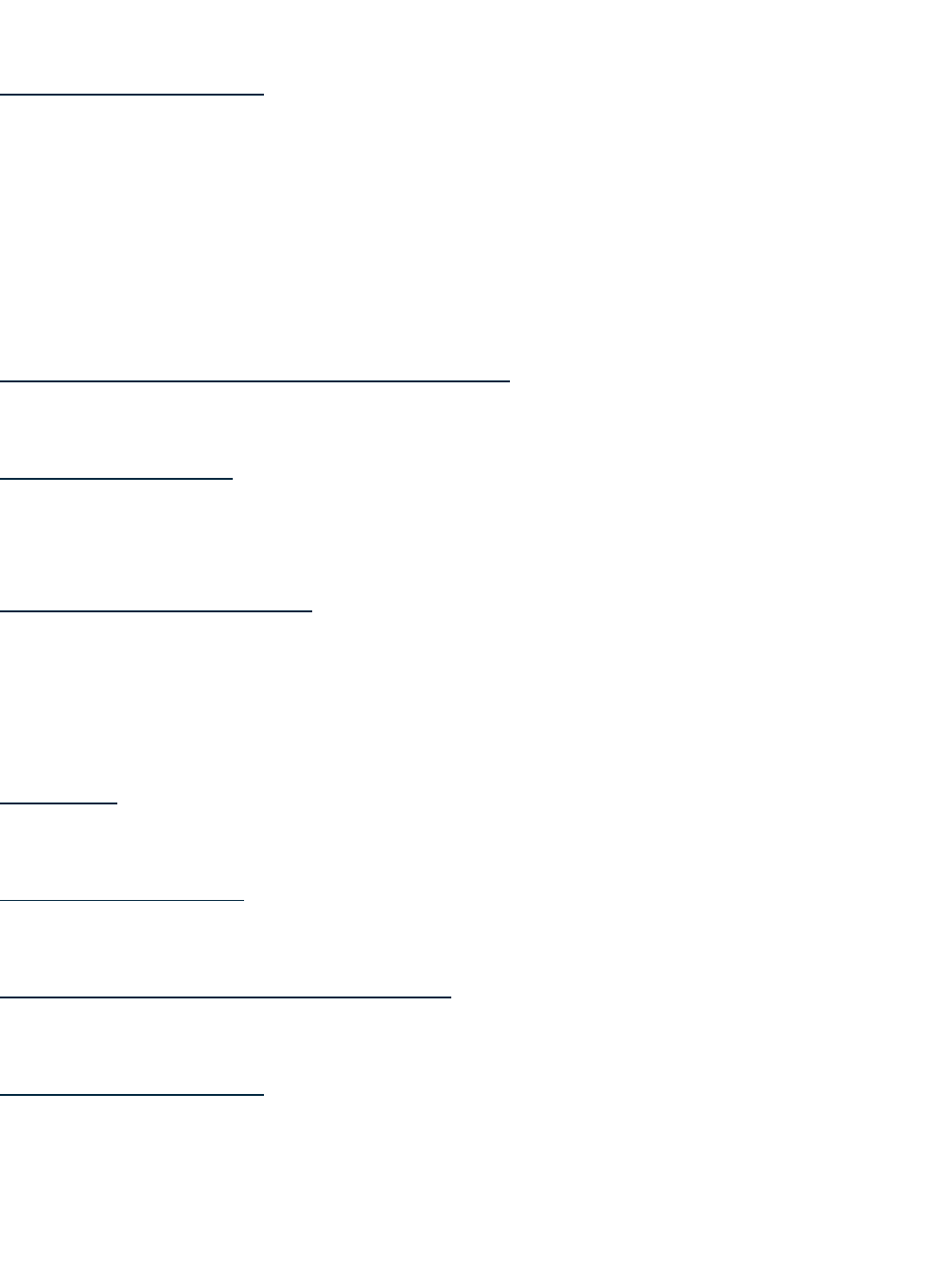
PROJECT INVENTORY
PROJECT OVERVIEW
• Rental assistance for those negatively, financially impacted by COVID19.
• Rental assistance for renters/individuals who lost jobs or had significant income
reduction due to the pandemic.
• Individuals are verified to be "low income' per federal standards. The Treasury has
determined that low-income persons have had financial hard times because of COVID-
19.
• This project is complete.
PROJECT DEMOGRAPHIC DISTRIBUTION
Disproportionately impacted low-income households and populations.
USE OF EVIDENCE
• None of the funding amount was allocated to towards evidence-based interventions.
• No program evaluation was conducted.
PERFORMANCE REPORT
Output:
• Money provided to renters for rent payment assistance.
Outcome:
• Number of households that were provided rent assistance: 31
PROJECT
89ARPAUA: Utility Assistance
FUNDING AMOUNT
$396,239
PROJECT EXPENDITURE CATEGORY
2.2 Household Assistance: Rent, Mortgage and Utility Aid
PROJECT OVERVIEW
• Utility payment assistance for those negatively, financially impacted by COVID19.
• Utility assistance for individuals who lost jobs or had significant income reduction due to
the pandemic.
• Individuals are verified to be "low income' per federal standards. The Treasury has
determined that low-income persons have had financial hard times because of COVID-
19.
48

PROJECT INVENTORY
• This project is complete. It was established to allow for the expenditure transfer of
eligible costs incurred from the County’s CARES Act funding.
PROJECT DEMOGRAPHIC DISTRIBUTION
Disproportionately impacted low-income households and populations.
USE OF EVIDENCE
• None of the funding amount was allocated to towards evidence-based interventions.
• No program evaluation was conducted.
PERFORMANCE REPORT
Output:
• Money provided to households for utility assistance.
Outcome:
• Number of households served: 358
ASSISTANCE TO UNEMPLOYED OR UNDEREMPLOYED WORKERS
(E.G., JOB TRAINING, SUBSIDIZED EMPLOYMENT, EMPLOYMENT
SUPPORTS OR INCENTIVES)
PROJECT
22WDARPACC: Career, College, and Credential Initiative
FUNDING AMOUNT
$10,000,000
PROJECT EXPENDITURE CATEGORY
2.10 Assistance to Unemployed or Underemployed Workers (e.g., job training, subsidized
employment, employment supports or incentives)
PROJECT OVERVIEW
The County is in the early process of using funds to provide specific programs targeted towards
assisting workers obtain credentials and education from sources other than university settings
to help these workers obtain gainful employment. Although university programs can achieve
good employment outcomes for workers, the goal of this program is to focus on workers who
are not going through that pathway and want to obtain work in trades (e.g., through trade
schools), through community colleges, and/or help workers obtain better jobs through
certification programs such as IT certification programs. The initiative intends to focus services
49

PROJECT INVENTORY
on those who were disproportionately impacted by the COVID-19 Pandemic including low-
income, unemployed, justice involved, homeless, and underemployed persons. The goal is to
help persons find long term employment in in-demand industries as defined by the County's
Workforce Development Board.
PROJECT DEMOGRAPHIC DISTRIBUTION
• Households that experienced unemployment.
• This program will provide a variety of workforce services to disadvantaged persons
including but not limited to low-income (based on FPL or AMI), unemployed, justice
involved (formerly incarcerated), homeless, and underemployed persons. Reports from a
variety of government and scholarly sources indicate that during the COVID-19
pandemic these groups were severely impacted and unable to find employment.
USE OF EVIDENCE
Although the programs and “interventions” funded through this initiative are not studied in the
same way as other worker programs such as those in the Job Seeker and Employer Services
Initiatives, there is a wealth of information from various government and scholarly sources
indicating that providing assistance for persons to enter community colleges, trade schools, and
other non-university settings for education and credentialling as well as providing supports for
low-income persons to obtain those credentials greatly improves the chances of those persons
obtaining better long-term employment (depending on the school, trade/degree, and
participant).
PERFORMANCE REPORT
Output:
• Number of students/persons enrolled in career navigation services and provided with
supports to obtain credentialing and other career advancement services.
Outcome:
• Aggregated participant obtainment of education milestones.
PROJECT
22WDARPAEI: Employer Services Initiative
FUNDING AMOUNT
$5,000,000
PROJECT EXPENDITURE CATEGORY
2.10 Assistance to Unemployed or Underemployed Workers (e.g., job training, subsidized
employment, employment supports or incentives)
50

PROJECT INVENTORY
PROJECT OVERVIEW
The County plans to provide funds to eligible contractors to implement employee retention
programs and support services that will ensure persons at risk of unemployment retain a skilled
workforce and provide proper training to retaining for gainful employment. These include
established programs such as incumbent worker training, navigation services, and other
programs to help employers retain their employees and upskill them for better jobs and long-
term career success. This free service will not only assist employers in retaining their workforce
(benefiting the company) but will improve the long-term success of low-income and low-skilled
professions to advance and find more sustainable employment.
PROJECT DEMOGRAPHIC DISTRIBUTION
• Households that experienced unemployment.
• This program will provide a variety of workforce services to disadvantaged persons
including but not limited to low-income (based on FPL or AMI), justice involved (formerly
incarcerated), homeless, and underemployed persons. Reports from a variety of
government and scholarly sources indicate that during the COVID-19 pandemic these
groups were severely impacted and unable to find employment.
USE OF EVIDENCE
The goals of this evidence-based project are to help primarily underemployed persons and
companies employing those persons retain their employees and upskill those workers to better
paying positions through moderate to high evidence-based practices such as incumbent worker
training, work experience, on-the-job training and other similar services. Like the Job Seeker
Initiative, these programs are based entirely or mostly on evidence-based practices. For
example, Miller, C., et. al. (2009). Strategies to help low-wage workers advance: Implementation
and early impacts of the Work Advancement and Support Center (WASC) demonstration and
Glosser, A., et. al. (2016). Testing two subsidized employment approaches for recipients of
Temporary Assistance for Needy Families: Implementation and early impacts of the Los Angeles
County Transitional Subsidized Employment Program showed these types of programs are
highly effective in improving retention rates and employment rates in various workers.
PERFORMANCE REPORT
Output:
• Number of workers provided incumbent worker training, work experience, navigation
services, and on-the-job training and other employer retention services.
Outcome:
• Number and percentage of workers who retained their jobs because of Employer
Services Initiative services.
51

PROJECT INVENTORY
PROJECT
22WDARPAJI: Job Seeker Initiative
FUNDING AMOUNT
$15,520,818
PROJECT EXPENDITURE CATEGORY
2.10 Assistance to Unemployed or Underemployed Workers (e.g., job training, subsidized
employment, employment supports or incentives)
PROJECT OVERVIEW
The County plans to use funds to provide programs such as rapid worker training, navigation
and counseling services, and support services with multiple providers across the Maricopa
County. The program intends to focus services on those who were disproportionately impacted
by the COVID-19 Pandemic including low-income, unemployed, justice involved, homeless, and
underemployed persons. The goal is to help persons find long term employment in in-demand
industries as defined by the County's Workforce Development Board.
PROJECT DEMOGRAPHIC DISTRIBUTION
• Households that experienced unemployment.
• This program will provide a variety of workforce services to disadvantaged persons
including but not limited to low-income (based on FPL or AMI), unemployed, justice
involved (formerly incarcerated), homeless, and underemployed persons. Reports from a
variety of government and scholarly sources indicate that during the COVID-19
pandemic these groups were severely impacted and unable to find employment.
USE OF EVIDENCE
The goals of this evidence-based project are to help job seekers obtain sustainable and long-
term employment through multiple services which are based on interventions that have a
moderate to strong evidence base. For example, according to studies published in the U.S.
Department of Labor Clearinghouse such as Smith, T. C., et. Al (2010). Rapid employment
model evaluation: Update #2 and Modicamore, D., et. al. (2017). Accelerating Connections to
Employment volume I final evaluation report. Programs such as rapid/accelerated training,
navigation services, and support services have been shown to improve employment, retention,
and wages for those entering those programs.
PERFORMANCE REPORT
Output:
52

PROJECT INVENTORY
• Number of job seekers provided rapid worker, navigation, and other similar workforce
assistance services.
Outcome:
• Number of unemployed and underemployed job seekers who obtained a job or improved
their wages based on Job Seeker Initiative Services.
PROJECT
30ARPAYCC: Youth Conservation Crews
FUNDING AMOUNT
$800,000
PROJECT EXPENDITURE CATEGORY
2.10 Assistance to Unemployed or Underemployed Workers (e.g., job training, subsidized
employment, employment supports or incentives)
PROJECT OVERVIEW
• Two-year project to provide on the job training for parks trail maintenance and
rehabilitation.
• Parks trails maintenance and construction utilizing youth conservation crews to perform
effective and efficient trail maintenance and construction projects for 636 miles of trails.
Leverage resources for job skill development and completing highly visited trail
improvements. Provide experiential learning opportunities for youth in a real-life natural
resource environment.
PROJECT DEMOGRAPHIC DISTRIBUTION
• Other households or populations that experienced a negative economic impact of the
pandemic.
• Not specifically geared toward assisting disadvantaged communities. The program will
focus on hiring agencies that provide young adult/youth (18 to 25) job training and
career exposure. Crews from AmeriCorps, American Conservation Experience (ACE), and
similar agencies will be utilized. These agencies focus on "service opportunities for
youth, young adults, and emerging professionals of all backgrounds to explore and
improve public lands while gaining practical professional experience.”
(https://www.usaconservation.org/)
USE OF EVIDENCE
Goal is to provide on the job training for youth and young adults for to provide learning
opportunities in a real-life natural resource environment.
53

PROJECT INVENTORY
PERFORMANCE REPORT
Output:
• Trail miles to be constructed and/or rehabilitated.
Outcome:
• Number of workers enrolled in sectoral job training programs.
• Number of workers completing sectoral job training programs.
PROJECT
95ARPAGNPP: Graduate Nurse Practice Readiness Pilot Project
FUNDING AMOUNT
$750,000
PROJECT EXPENDITURE CATEGORY
2.10 Assistance to Unemployed or Underemployed Workers (e.g., job training, subsidized
employment, employment supports or incentives)
PROJECT OVERVIEW
This pilot project is a collaboration between Maricopa County, more than five hospitals and
medical centers in Maricopa County, and three Nursing programs (colleges/universities) in
Maricopa County to increase the number of qualified nurses in Maricopa County to help
mitigate various public health emergencies such as the COVID-19 Pandemic and address
chronic shortages in the number of nurses needed across the County. The goal is to not only
increase the number of qualified nurses and to create a model by which future incentive
programs and improvements can be made to address the chronic shortage of nurses in
Maricopa County. Nurses have been critical in addressing various public health emergencies
and Maricopa County is striving to address this long-term shortage of nurses.
PROJECT DEMOGRAPHIC DISTRIBUTION
• General Public
• This project is not specifically geared towards disproportionately impacted persons and
is focused on increasing qualified/trained nurses in Maricopa County to help mitigate
public health emergencies such as the COVID-19 Pandemic.
USE OF EVIDENCE
• None of the funding amount was allocated to towards evidence-based interventions.
• No program evaluation was conducted.
54

PROJECT INVENTORY
PERFORMANCE REPORT
Output:
• Number of senior-level student nurses provided incentives and training to complete
coursework: 55
Outcome:
• Success Rate of Incentive program defined as nurses hired within one year of completing
the incentive program: Goal is 100 percent.
HEALTHY CHILDHOOD ENVIRONMENTS: CHILD CARE
PROJECT
22EDARPAEE: Early Education and Childcare Bridge Funding
FUNDING AMOUNT
$1,000,000
PROJECT EXPENDITURE CATEGORY
2.11 Healthy Childhood Environments: Child Care
PROJECT OVERVIEW
Maricopa County is using monies to increase the hours of instruction and operation in it’s early
education programs (e.g. Head Start and Early Head Start). More specifically, the County has
found to allow the parents of young children to work full-time or work the necessary hours
they needed to be self-sustaining that the current programs’ operating hours is insufficient. By
extending the hours of these programs, the County will be able to provide increased
educational hours to the children served and increase the number of working parents who will
enroll their children in these programs. Finally, this project will help bridge existing federal
funding with other sources of funding, so that the changes made to the programs will be
sustained long-term.
PROJECT DEMOGRAPHIC DISTRIBUTION
• Low-or-moderate income households or populations.
• This project serves disadvantaged communities/persons. Specifically, families eligible for
early education childcare services (Head Start/Early Head Start) are very low-income to
low-income households and/or households with a child who has disabilities, and often
face many other household instability issues.
USE OF EVIDENCE
55

PROJECT INVENTORY
The goals of this project are to improve childcare overall and reduce the financial burden on
Head Start/Early Head Start participants. Specifically, by increasing the service hours of more
than 25 County operated Head Start and Early Head Start facilities to 6 to 10 hours per day,
the County will significantly improve the childcare and early learning for the children in its
programs. Head Start and Early Head Start programs are well established and evidence-based
interventions according to multiple sources such as the PEW Results First Clearinghouse and
furthering these programs is, therefore, evidence-based.
PERFORMANCE REPORT
Output:
• Number of Head Start and Early Head start facilities operating on 10-hour per day
schedules.
Outcome:
• Percent of children ages 4-5 demonstrating school readiness.
• Number of Children Served by Childcare Program: Goal is 1,245 annually.
LONG-TERM HOUSING SECURITY: AFFORDABLE HOUSING
PROJECT
22HDARPAHS: Affordable Housing Development and Support
FUNDING AMOUNT
$65,236,552
PROJECT EXPENDITURE CATEGORY
2.15 Long Term Housing Security: Affordable Housing
PROJECT OVERVIEW
In an effort to address the growing lack of affordable housing in the County, Maricopa County
will support the development of affordable housing for low-income households. Specifically,
Maricopa County plans to add at least 120 affordable housing units to its existing affordable
housing inventory. The County will contract for construction and require that proposals include
options for serving economically disadvantaged persons. For example, proposals will include
options such as constructing new affordable housing on a Qualified Census Tract (QCT) or
renovating an existing building located in a Qualified Census Tract to become affordable
housing. Additionally, Maricopa County will encourage primary contractors to subcontract a
portion of the work with small businesses, if possible. This effort will further the purpose of the
American Rescue Plan Act by promoting small businesses that may have been
56

PROJECT INVENTORY
disproportionately impacted by the COVID-19 pandemic. After awarding the contract the
project is expected to take three years to complete.
PROJECT DEMOGRAPHIC DISTRIBUTION
• Low-or-moderate income households or populations.
• The project will primarily serve disadvantaged communities. Specifically, the affordable
housing projects will focus on (but not be limited to) providing affordable housing in a
Qualified Census Tract.
USE OF EVIDENCE
The goals of this evidence-based project are to provide affordable housing to low-income
persons who have been negatively impacted by the COVID-19 pandemic which will further
increase the well-being of residents and revitalize low to moderate income communities.
County reports and information repeatedly show a lack of affordable housing causing a strain
on many residents. This project aims to help address some of that need. According to research
conducted by Diamond and McQuade (2015) Who Wants Affordable Housing in their
Backyard? An Equilibrium Analysis of Low-Income Property Development (Journal of Political
Economy) affordable housing in low-income areas improves the financial well-being by $23,000
per homeowner and $6,500 per renter. Overall, the research strongly shows that that
affordable housing is an effective way to revitalize low-income communities. Further because
the goal of affordable housing development is to provide affordable housing to persons who
are likely lower income, the development of affordable housing is an evidence-based practice.
PERFORMANCE REPORT
Output:
• Money to preserve or develop affordable housing units.
Outcome:
• Number of affordable housing units preserved or developed: 120
LONG-TERM HOUSING SECURITY: SERVICES FOR UNHOUSED
PERSONS
PROJECT
22HDARPALE: Landlord Engagement Improvement Project
FUNDING AMOUNT
$5,000,000
PROJECT EXPENDITURE CATEGORY
57

PROJECT INVENTORY
2.16 Long Term Housing Security: Services for Unhoused Persons
PROJECT OVERVIEW
Maricopa County is funding and overseeing the establishment and administration of a
centralized systemwide landlord engagement service for the County's homeless services
system. The project will include rental market research as well as outreach, education,
recruitment, incentivization, and retention of landlords to expand housing opportunities for
people experiencing homelessness. This project will further support other County efforts such
as Permanent Supportive Housing and Rapid Rehousing long-term and allow for more targeted
landlord engagement activities in the future. The project will result in increased numbers of
landlords participating in County programs to house those experiencing homelessness as well
as increase the numbers of persons experiencing homelessness placed in housing.
PROJECT DEMOGRAPHIC DISTRIBUTION
• Low-or-moderate income households or populations.
• This project primarily serves disadvantaged communities. Specifically, the project is
geared towards improving persons experiencing homelessness placements into housing.
USE OF EVIDENCE
• The goals of this project are to increase the number of landlords participating in the
County’s homeless services system to result in significantly greater numbers of
unhoused persons provided affordable housing. Additionally, this project will expand the
reach of existing County programs such as rapid rehousing so that homeless services
efforts can be improved long-term. Although Landlord Engagement Services for
homeless persons lacks experimental studies to support it, organizations such as the U.S.
Department of Housing and Urban Development and National Coalition to End
Homelessness promotes local agencies and organizations conduct landlord engagement
for homeless persons to improve placements. Both organizations have resources and
published reports detailing effective strategies to accomplish this task.
• Monies associated with this project are not geared towards evidence-based practices.
However, results of this work will inform a greater body of evidence around landlord
engagement as an effective practice for reducing homelessness.
PERFORMANCE REPORT
Output:
• Total number of properties that accept homeless housing programs.
• Number of new properties recruited to accept homeless housing programs.
• Total number of units available by unit size, city, zip code, and housing programs
accepted with an emphasis on units in zip codes that support de-concentration efforts.
58

PROJECT INVENTORY
• Number of landlord outreach and education events hosted or participated in by landlord
engagement service.
Outcome:
• Percentage increase in annual homeless housing placements per year (Goal: 20% year 1
and 10% thereafter).
PROJECT
22HDARPAPF: ARPA Provider Funding (Flexible Funding Account)
FUNDING AMOUNT
$3,000,000
PROJECT EXPENDITURE CATEGORY
2.16 Long Term Housing Security: Services for Unhoused Persons
PROJECT OVERVIEW
The County will use funds to establish a pool of funds that homeless service providers will be
able to request monies from on behalf of persons who are experiencing homelessness or may
become homeless to provide housing and wrap around support services for those who are
homeless and prevent persons from becoming homeless. Providers will be able to request up to
$2,500 per person annually for services such as rent and utilities. These funds will be provided
to one or more providers through a competitive request for proposals. These providers must
show that their process to approve/deny applications for assistance is made in a fair, expedient,
and reliable manner. Homeless service providers have reported that persons can often
unexpectedly be put into circumstances where they may become homeless. Monies for this
project are expected to help prevent and address these situations as well as assist those who
are currently homeless find and be supported in long-term housing.
PROJECT DEMOGRAPHIC DISTRIBUTION
• Disproportionately Impacted other households or populations that experienced a
disproportionate negative economic impact of the pandemic.
• The project will primarily serve disadvantaged communities/populations. More
specifically, this project will focus on assisting persons experiencing homelessness.
USE OF EVIDENCE
• The goal of this evidence-based project is to prevent increased homelessness on an
ongoing basis by creating a funding pool that nonprofit providers can quickly obtain
monies from to directly assist homeless persons and persons at risk of homelessness.
However, there is a lack of data and research indicating whether having a flexible
59

PROJECT INVENTORY
funding pool for providers improves homeless services over a geographic area such as a
county.
• The monies provided for this project will help increase the body of evidence around
funding pools for nonprofit homeless providers.
PERFORMANCE REPORT
Output:
• Number of assistance applications processed.
• Percent of approved applications for assistance processed within 15 business days.
Outcome:
• Number of persons prevented from becoming homeless through flexible funding.
• Number of persons experiencing homelessness who obtained housing through flexible
funding.
PROJECT
22HDARPARR: ARPA Rapid Rehousing
FUNDING AMOUNT
$4,000,000
PROJECT EXPENDITURE CATEGORY
2.16 Long Term Housing Security: Services for Unhoused Persons
PROJECT OVERVIEW
Maricopa County intends to provide monies to increase Rapid Rehousing Services for homeless
persons. Rapid Rehousing is a federally established program with a significant amount of
evidence from the U.S. Department of Housing and Urban Development as well as published
research showing that the program effectively lowers the numbers of homeless persons by
proving these persons with more stable long-term housing. Because of the COVID-19
pandemic, there has been a significant increase in the number of homeless persons and the
County is attempting to help mitigate this challenge through this project. The County intends to
contract with established nonprofit homeless service providers to conduct these services and
address the significant increase in demand that has occurred because of COVID-19. This
project will also coordinate with other County programs for reducing homelessness to ensure
monies are spent efficiently and effectively.
PROJECT DEMOGRAPHIC DISTRIBUTION
• Disproportionately Impacted other households or populations that experienced a
disproportionate negative economic impact of the pandemic.
60

PROJECT INVENTORY
• The project will primarily serve disadvantaged communities/populations. More
specifically, this project will focus on assisting homeless persons.
USE OF EVIDENCE
The goals of this evidence-based project are to rehouse homeless persons and place them into
long-term housing. County community assessments show a lack of capacity to shelter homeless
persons and this project will help address this critical gap. A multitude of studies and research
show that providing homeless services such as shelter beds reduces homelessness and the
PEW Results First Clearinghouse further indicates this program has a positive impact based on
high-quality evidence.
PERFORMANCE REPORT
Output:
• Number of homeless persons provided rapid rehousing assistance.
Outcome:
• Percentage of individuals and families provided rapid rehousing services who returned to
homelessness.
PROJECT
22HDARPASB: Additional Homeless Shelter Beds
FUNDING AMOUNT
$21,000,000
PROJECT EXPENDITURE CATEGORY
2.16 Long Term Housing Security: Services for Unhoused Persons
PROJECT OVERVIEW
The County will provide monies to homeless service providers located within the County to add
new shelter, bridge, and transitional beds for persons experiencing homelessness. Although the
number of beds each provider will add and the costs for the added beds will vary, this project is
expected to significantly increase the number of available beds for those experiencing
homelessness and allow service providers to better address the increase to homelessness
caused by COVID-19. Additionally, by providing these monies to expand the bed capacity for
homeless persons the County will help significantly improve County-wide services to end
homelessness in the long-term.
PROJECT DEMOGRAPHIC DISTRIBUTION
61

PROJECT INVENTORY
• Disproportionately or populations that experienced a disproportionate negative
economic impact of the pandemic.
• The project will primarily serve disadvantaged communities/populations. More
specifically, this project will focus on assisting persons experiencing homelessness.
USE OF EVIDENCE
The goals of this evidence-based project are to increase the available number of beds that can
house homeless persons. County community assessments show a lack of capacity to shelter
homeless persons and this project will help address this critical gap. A multitude of studies and
research show that providing homeless services such as shelter beds reduces homelessness.
PERFORMANCE REPORT
Output:
• Number of additional homeless shelter beds added to capacity (for County).
Outcome:
• Number of additional homeless persons provided shelter services.
PROJECT
22HDARPASS: Provide Additional Homelessness Services
FUNDING AMOUNT
$41,753,710
PROJECT EXPENDITURE CATEGORY
2.16 Long Term Housing Security: Services for Unhoused Persons
PROJECT OVERVIEW
• Disproportionately Impacted other households or populations that experienced a
disproportionate negative economic impact of the pandemic.
• The County is continuing its County-wide COVID-19 Isolation and Housing Program for
people experiencing homelessness. Additionally, these funds will be used to continue
providing homeless services at its various bridge housing locations, which the County
established with CARES Act funding. These bridge locations provide critical services to
persons experiencing homelessness and are transitioning to permanent housing. Due to
the COVID-19 pandemic, many homeless persons became infected with the virus but
were unable to go to shelters or other housing because of COVID-19 restrictions. The
programs funded by this project will continue to mitigate this issue.
PROJECT DEMOGRAPHIC DISTRIBUTION
62

PROJECT INVENTORY
The project will primarily serve disadvantaged communities/populations. More specifically, this
project will focus on assisting homeless persons.
USE OF EVIDENCE
The goals of this evidence-based project are to provide critical housing to homeless persons
transitioning to permanent housing as well as prevent further COVID-19 infections for
homeless by providing quarantine housing for these persons. A multitude of studies and
research supports providing housing such as transitional and bridge housing to assist these
persons in obtaining more permanent housing.
PERFORMANCE REPORT
Output:
• Number of homeless persons provided bridge housing services.
Outcome:
• Number of homeless persons moved to permanent/long-term housing.
PROJECT
22HSARPAHG: Homeless Services Grants for Small Cities and Towns
FUNDING AMOUNT
$3,000,000
PROJECT EXPENDITURE CATEGORY
2.16 Long Term Housing Security: Services for Unhoused Persons
PROJECT OVERVIEW
Funding will be made available to Small Cities and Towns that do not receive other funding to
address homeless and unsheltered individuals in their respective communities.
PROJECT DEMOGRAPHIC DISTRIBUTION
Impacted households that experienced increased food or housing insecurity.
USE OF EVIDENCE
This program has not started. Evidence based intervention amounts and any program
evaluations are TBD.
PERFORMANCE REPORT
This program has not started. Performance measures are in development.
Output:
63

PROJECT INVENTORY
• TBD
Outcome:
• TBD
PROJECT
22HSARPAHN: Homeless Navigation and Additional Housing Services
FUNDING AMOUNT
$2,600,000
PROJECT EXPENDITURE CATEGORY
2.16 Long Term Housing Security: Services for Unhoused Persons
PROJECT OVERVIEW
Persons experiencing homelessness and individuals and families facing homeless will be
provided with housing related navigation services to move the individuals from emergency
shelter to housing.
PROJECT DEMOGRAPHIC DISTRIBUTION
Impacted households that experienced increased food or housing insecurity.
USE OF EVIDENCE
This program has not started. Evidence based intervention amounts and any program
evaluations are TBD.
PERFORMANCE REPORT
This program has not started. Performance measures are in development.
Output:
• TBD
Outcome:
• TBD
PROJECT
22HSARPAHS: Homelessness System Regional Training and Service Standardization
FUNDING AMOUNT
$1,000,000
PROJECT EXPENDITURE CATEGORY
64

PROJECT INVENTORY
2.16 Long Term Housing Security: Services for Unhoused Persons
PROJECT OVERVIEW
Training content will be purchased to provide standardization promoting equity and increasing
the level of service for homeless service providers.
PROJECT DEMOGRAPHIC DISTRIBUTION
Impacted households that experienced increased food or housing insecurity.
USE OF EVIDENCE
This program has not started. Evidence based intervention amounts and any program
evaluations are TBD.
PERFORMANCE REPORT
This program has not started. Performance measures are in development.
Output:
• TBD
Outcome:
• TBD
HOUSING SUPPORT: HOUSING VOUCHERS AND RELOCATIONS
ASSISTANCE FOR DISPROPORTIONATELY IMPACTED
COMMUNITIES
PROJECT
22CDARPARE: Relocation Assistance
FUNDING AMOUNT
$16,000,000
PROJECT EXPENDITURE CATEGORY
2.17 Housing Support: Housing Vouchers and Relocation Assistance for Disproportionately
Impacted Communities
PROJECT OVERVIEW
Relocation Assistance will be provided to low-income individuals who would otherwise face
homelessness.
65

PROJECT INVENTORY
PROJECT DEMOGRAPHIC DISTRIBUTION
Impacted households that experienced increased food or housing insecurity.
USE OF EVIDENCE
This program has not started. Evidence based intervention amounts and any program
evaluations are TBD.
PERFORMANCE REPORT
This program has not started. Performance measures are in development.
Output:
• TBD
Outcome:
• TBD
HOUSING SUPPORT: OTHER HOUSING ASSISTANCE
PROJECT
22HDARPAER: Emergency Repairs and HVAC
FUNDING AMOUNT
$8,650,000
PROJECT EXPENDITURE CATEGORY
2.18 Housing Support: Other Housing Support
PROJECT OVERVIEW
Maricopa County is providing emergency home repairs to individuals and families experiencing
hardship as a result of the COVID-19 pandemic. These services will be provided County-wide
over the next two years and will include general emergency repairs such as roofing and
plumbing, rehabilitations such as ADA accommodations and addressing safety hazards, HVAC
repairs and replacements, and other repairs/cleanup such as bio-hazard cleaning. The project
will provide up to $15,000 per unit for these services. Additionally, these services will be
targeted to low-income persons (80% Area Median Income) and prioritized for persons most
disproportionately impacted such as seniors, children, persons with disabilities, and persons
living on Qualified Census Tracts.
PROJECT DEMOGRAPHIC DISTRIBUTION
• Low-or-moderate income households or populations.
66

PROJECT INVENTORY
• This project will primarily serve disadvantaged communities. Although the project does
not solely focus on persons living in disadvantaged geographic areas such as Qualified
Census Tracts, it will prioritize applications and requests for home repairs in those areas.
Additionally, all intended beneficiaries will be low-income persons facing household
insecurity.
USE OF EVIDENCE
The goals of this evidence-based project are to improve the safety and comfort of low-income
persons by providing critical repairs to their homes. These services will allow cost burdened
persons who have been disproportionately impacted by the pandemic to address key safety
hazards in their homes. Research conducted by the University of Michigan (February 2021)
Reinforcing low-income homeownership through home repair: Evaluation of the Make It Home
Repair Program showed evidence that persons receiving such public emergency home repair
services could not have repaired their homes without such services. Further, the experimental
study showed that the public home repair programs improved the safety, livability of the home,
and stability of home ownership.
PERFORMANCE REPORT
This program has not started. Performance measures are in development.
Output:
• Number of low-income persons served: 299
• Number of persons served who live in a Qualified Census Tract: 116
Outcome:
• Number of served homes where emergency repair needs were alleviated: 299
SOCIAL DETERMINANTS OF HEALTH: COMMUNITY HEALTH
WORKERS OR BENEFITS NAVIGATORS
PROJECT
22SDARPACM: Case Management, Intensive Care Case Management, and Support
FUNDING AMOUNT
$2,373,000
PROJECT EXPENDITURE CATEGORY
2.19 Social Determinants of Health: Community Health Workers or Benefits Navigators
PROJECT OVERVIEW
67

PROJECT INVENTORY
The County is using monies to expand its Senior Adult Independent Living (SAIL) program
through several strategies. First, the County will hire a SAIL Program Intensive Case Manager
who will be responsible for case management to clients with the most complicated and labor-
intensive issues to address. Currently this work falls to existing case managers and decreases
the time they can devote to clients. Second, the monies will be used to hire multiple SAIL case
managers. With less than 30 case managers who report handling more than 120 cases per
month, the workload of these employees is too high and prevents staff from providing the
preferred level of customer service and support to their clients. Monies to fund additional case
managers will significantly reduce this burden and allow for higher quality services to these
vulnerable adults. Additionally, funds will be used to purchase additional supplies and
equipment for staff to help increase overall efficiency and effectiveness in service delivery.
Finally, the monies will also be used to purchase necessary supplies for clients to help them
remain living in their homes with safety and with dignity.
PROJECT DEMOGRAPHIC DISTRIBUTION
• Low-or-moderate income households or populations.
• This program will provide services to vulnerable and disadvantaged seniors and adults
with disabilities. Information from the CDC reports and published research such as
Smorenberg, et. al. (2021) How does SARS-CoV-2 target elderly patients? A review on
potential mechanisms increasing disease severity clearly show that COVID-19 has a
disproportionate impact on seniors.
USE OF EVIDENCE
The goals of this evidence-based project are to help support seniors and persons with
disabilities remain living in their homes safely and with dignity. According to Beswick et.al.
(2008) Complex interventions to improve physical function and maintain independent living in
elderly people: a systematic review and meta-analysis case management interventions to assist
adults maintain independent living improved multiple health outcomes.
PERFORMANCE REPORT
Output:
• Number of additional case management hours funded.
• Number of intensive case management hours provided to clients.
Outcome:
• Number of additional clients assisted (aggregate caseload of clients served by ARPA
funded case managers).
• Intensive cases provided with secure housing.
68

PROJECT INVENTORY
MEDICAL FACILITIES FOR DISPROPORTIONATELY IMPACTED
COMMUNITIES
PROJECT
86ARPAFQHC: Federally Qualified Health Care Centers
FUNDING AMOUNT
$52,000,000
PROJECT EXPENDITURE CATEGORY
2.21 Medical Facilities for Disproportionately Impacted Communities
PROJECT OVERVIEW
• FQHCs are safety-net providers for underserved and at-risk communities, who were
disproportionately impacted by COVID-19. As a result, service demands on FQHCs grew
immensely during the pandemic and some are unable to meet the demand or provide
additional services because they lack equipment or the physical space to expand
operations. Within Maricopa County there are nine Health Centers with approximately
55 clinics or sites.
• MCDPH is working with the Arizona Association for Community Health Centers
(AACHC) to distribute up to $52,000,000 to support facility construction, purchase or
refurbishment, or capital equipment in order to provide additional or enhanced services
in areas of high need. Priority is given to high-impact projects that will commence
quickly. Partnering with the AACHC to pursue these capital expenditure projects over
alternatives was the best option given their unique role in enhancing access to
healthcare services for underserved communities.
PROJECT DEMOGRAPHIC DISTRIBUTION
• General Public
• COVID-19 has disproportionately impacted low-income and underserved communities,
which has led to increased demands for services from facilities that primarily serve these
populations. FQHCs are safety-net providers for underserved and at-risk communities.
They must provide comprehensive, high-quality, and culturally competent services to
uninsured individuals, Medicare and/or Medicaid beneficiaries and others regardless of
ability to pay.
USE OF EVIDENCE
This section is not applicable per Treasury Reporting Guidance.
69

PROJECT INVENTORY
PERFORMANCE REPORT
In the first tranche of funding, over $24M was awarded to AACHC and 5 projects were
selected:
1. Wesley Community & Health Centers will receive $7.5 million to support the
development of a new location to replace their original clinic at 1300 S. 10th Street near
downtown Phoenix, which was acquired in 1950. The new location will allow the Wesley
clinic to see an additional 3,500 to 7,000 patients each year.
2. Terros Health will receive $5.5 million for renovations at the Community Health Center
at 4909 E. McDowell Road, in Phoenix. The renovation will include additional patient
care rooms and waiting room enhancements that will help facilitate integrated care and
expand access to primary care, opioid use treatment, HIV testing and prevention, and
youth services for the 9,000 patients served as this location.
3. Neighborhood Outreach Access to Health (NOAH) will receive $4.1 million in funding to
support the development of a large, new comprehensive Community Health Center at
8705 E. McDowell Road in Scottsdale. The new location will serve as the new Cholla
Health Center and allow for the consolidation of three existing sites by providing the
space and operational efficiencies needed to continue to provide quality health care to
over 16,000 individuals with low incomes in Scottsdale, east Phoenix, Tempe, and Mesa.
4. Native Health will receive $3.68 million to renovate a vacant business suite at their
Southern Business Center at 777 W. Southern Avenue in Mesa. The renovation will
facilitate the expansion of dental, optometry, podiatry, pharmacy, and telehealth services
and generate an additional 4,200 patient visits over the first two years.
5. Valleywise Health will receive $656,000 for facility improvements at their Community
Health Center at 950 E. Van Buren Street in Avondale. The facility upgrades will be
implemented using evidence-based design and support a safe, effective, and efficient
setting for the 5,000 patients served at this location.
In the second tranche of funding, 7 new projects have been selected thus far:
1. Mountain Park Health Center will receive $7.5 million to support the construction of a
new primary care clinic in a high-need area of Glendale. Projected to serve
approximately 10,000 individuals, the 27,500 square foot clinic will include 36 exam
rooms for family medicine, pediatrics, and women’s health. The center also will provide
oral health, behavioral health, dietitian services and an on-site laboratory.
2. Valle del Sol will receive $533,500 to replace equipment across six health center
locations. This organization-wide equipment upgrade will improve patient experience by
providing a more accessible location for their physical and behavioral health care.
3. Valleywise Health will receive $1.3 million for renovation and improvements at
Valleywise Community Health Center in Guadalupe. The Valleywise Community Health
70

PROJECT INVENTORY
Center in Chandler will receive $3.7 million for renovation of the clinic’s x-ray suite and
dental suite, as well as a pharmacy expansion and overall building improvements.
4. Circle the City will receive $5.6 million to build, purchase or lease a facility in the East
Valley for a medical respite care center and possible primary care. The medical respite
care center will provide people experiencing homelessness who need medically
recuperative services with short-term residential care allowing them to also access
behavioral and physical therapy supportive services.
5. Circle the City also will receive $501,656 for renovation of its Downtown Family Health
Center in Phoenix, which will create new exam rooms, a patient consult room, a medical
procedure room, and other spaces to increase the Center’s capacity to provide medical
care for an increasing number of patients and to add medical services.
6. Neighborhood Outreach Access to Health (NOAH) will receive $3.4 million to purchase
equipment required to establish a new information technology network that will allow
NOAH to better meet patient needs and improve patient care and outcomes. The funds
will also be used to purchase equipment for NOAH’s new Desert Mission Health Center,
which will provide patient care for women’s health, hearing, vision, infectious disease,
and individuals with limited mobility.
7. NATIVE HEALTH will receive $1.7 million for the purchase of dental equipment at two
Phoenix clinics and one Mesa clinic. The equipment will allow NATIVE HEALTH to begin
providing dental care as a new service at its Mesa location.
Output:
• Number and type of projects: 12 (see above)
• Project timelines: TBD
Outcome:
• Description of improved services: Reportable upon completion
STRONG HEALTHY COMMUNITIES: NEIGHBORHOOD FEATURES
THAT PROMOTE HEALTH AND SAFETY
PROJECT
22HSARPASA: Surprise Resource Center
FUNDING AMOUNT
$18,000,000
PROJECT EXPENDITURE CATEGORY
2.22 Strong Healthy Communities: Neighborhood Features that Promote Health and Safety
71

PROJECT INVENTORY
PROJECT OVERVIEW
• Maricopa County is partnering with the City of Surprise to construct a new Community
Resource Center in Surprise, Arizona. This Resource Center, once constructed, will be
used by both the City and Maricopa County staff to provide various services including
workforce assistance, rental and utility assistance, and connections to other Maricopa
County and City of Surprise social support services. Because of the variety of services
that will be provided at this Resource Center, this project will strengthen the immediate
and long-term health and economic resiliency and resiliency of the Northwest part of
Maricopa County.
• The City has provided the land and design. At the completion of the project, several
Maricopa County departments will be on-site to provide services to the residents in the
northwest valley. The site is currently an underdeveloped former mobile home park that
has been cleared for some time.
PROJECT DEMOGRAPHIC DISTRIBUTION
• Impacted low-or-moderate income households or populations.
• The Community Resource Center will be constructed in Qualified Census Tract 608.01.
The Resource Center will serve primary low-income persons, in-poverty persons, and
various groups of persons disproportionately impacted by the COVID-19 Pandemic.
USE OF EVIDENCE
This section is not applicable per Treasury Reporting Guidance.
PERFORMANCE REPORT
Output:
• Project completion to expenditure ratio: (goal is 100 percent completion with 100 percent
or less of budgeted cost = ratio of 1:1).
Outcome:
• Additional disproportionately impacted persons served through Maricopa County
Resources 3-months after Resource Center Opening.
PROJECT
30ARPAIPKS: Investments in Parks
FUNDING AMOUNT
$10,000,000
PROJECT EXPENDITURE CATEGORY
2.22 Strong Healthy Communities: Neighborhood Features that Promote Health and Safety
72

PROJECT INVENTORY
PROJECT OVERVIEW
• This project will provide supplemental resources to several of Maricopa County Parks to
ensure our outdoor spaces are modernized, improved and maintained. Outdoor
recreational opportunities are important ways to maintain our residents and visitors’
quality of life.
• Investment in outdoor recreation spaces to better serve citizens disproportionally
impacted by COVID-19 is an eligible use of ARPA funding. According to a recent study,
park usage during COVID-19 demonstrated a drop-off in urban and county park use of
“census tracks with lower socioeconomic status” (Olenizcz, para 9). To engage these
census tracks, Maricopa County Parks and Recreation will create new amenities: a
family campground in the southwest valley (Estrella Mountain Regional Park), bike tracks
in the east and west valley (White Tank Mountain and McDowell Mountain Regional
Parks), and hiking trail access in the northwest region (Lake Pleasant Regional Park). The
pandemic resulted in socially and economically disadvantaged individuals staying closer
to home, unwilling or unable to travel to utilize these services. The requested projects
will provide quick access to camping, hiking, and biking, better serving disproportionately
impacted communities though local access and improved service offerings.
• Olenizcz, Laura. Study Raises Questions About Access to Urban Parks During the Pandemic,
September 29, 2021.
PROJECT DEMOGRAPHIC DISTRIBUTION
General Public
USE OF EVIDENCE
This section is not applicable per Treasury Reporting Guidance.
PERFORMANCE REPORT
Output:
• TBD
Outcome:
• TBD
ASSISTANCE TO SMALL BUSINESSES
LOANS OR GRANTS TO MITIGATE FINANCIAL HARDSHIP
PROJECT
73

PROJECT INVENTORY
95ARPASBRP: Small Business Resilience Program – Loans and Grants
FUNDING AMOUNT
$55,000,000
PROJECT EXPENDITURE CATEGORY
2.29 Loans or Grants to Mitigate Financial Hardship
PROJECT OVERVIEW
• Address Negative Economic Impacts & Disparities in Public Health Outcomes - Small
Business Economic Assistance through the Small Business Resilience Program. This
program helps small businesses grow.
• Maricopa County is offering grants up to $25,000 to help stabilize and support
underserved small businesses, micro businesses and nonprofits who have experienced a
financial hardship due to the COVID-19 pandemic.
• Small Businesses can apply for the grant for up to $25,000 who demonstrate revenue
declines or unanticipated operating cost deficits from between July-Dec 2019 and July-
Dec 2020 as well as other qualifications.
PROJECT DEMOGRAPHIC DISTRIBUTION
Impacted small businesses that experienced a negative economic impact of the pandemic.
USE OF EVIDENCE
• None of the funding amount was allocated to towards evidence-based interventions.
• No program evaluation was conducted.
PERFORMANCE REPORT
Output:
• Grant awards to impacted small and micro-sized businesses.
Outcome:
• $30.1 million awarded to 1,354 small and micro-sized businesses. These grants were for
a wide range of business types across multiple ethnicities. They helped these businesses
with payroll, rent and many other costs thereby mitigating the pandemic impact on the
businesses, their employees and their supply chains.
ASSISTANCE TO IMPACTED NONPROFIT ORGANIZATIONS
IMPACTED OR DISPROPORTIONATELY IMPACTED
74

PROJECT INVENTORY
PROJECT
22HSARPADF: Reduce Domestic Violence Funding Gaps
FUNDING AMOUNT
$5,000,000
PROJECT EXPENDITURE CATEGORY
2.34 Assistance to Impacted Nonprofit Organizations Impacted or Disproportionately Impacted
PROJECT OVERVIEW
Maricopa County has provided monies to reduce funding gaps that nonprofit domestic violence
service providers experienced as a result of COVID-19. Domestic violence service providers all
reported significant decreases in revenues and funding because their main funding sources,
federal contracts/funds and fundraising efforts declined because of COVID-19. Specifically,
federal cuts for victim services and an inability to raise donations because of the COVID-19
pandemic caused significant revenue losses for service providers and service needs remained
high or increased during the pandemic. Monies will be distributed to help restore service levels
for providers across the County and help ensure the stability of domestic violence service
programs.
PROJECT DEMOGRAPHIC DISTRIBUTION
• Other non-profits disproportionately impacted by the pandemic.
• This project is assisting nonprofit domestic service providers which will use these monies
to provide critical services to a highly disadvantaged and marginalized group, domestic
violence survivors.
USE OF EVIDENCE
The goals of this project are to reduce the funding and revenue issues that have impacted
nonprofit domestic violence service providers County-wide. Specifically, the County aims to
award monies to various domestic violence service providers and reduce the financial impact
that occurred because of COVID-19. There is a long history that domestic violence service
providers directly help victims of domestic violence with strategies such as financial assistance,
counseling, and sheltering.
PERFORMANCE REPORT
Output:
• Monies used to reduce revenue loss/funding gaps: $4,839,200 to date.
Outcome:
• Number of non-profits served: 9
75

PROJECT INVENTORY
• Percentage of monies distributed to domestic violence service providers using a trauma
informed approach: 100%
PROJECT
22HSARPANA: Nonprofit Assistance Program
FUNDING AMOUNT
$13,736,552
PROJECT EXPENDITURE CATEGORY
2.34 Assistance to Impacted Nonprofit Organizations Impacted or Disproportionately Impacted
PROJECT OVERVIEW
This project focuses on providing monies to human services/social services programs through
grants that grantees will use to expand existing programs or to develop and implement unique
human services programs that will serve Maricopa County residents. The County awarded and
managing grants up to $200,000 with 82 nonprofit providers to provide a variety of human
services (food assistance, eviction prevention and housing services, legal services for low-
income persons, job training, senior assistance, services for persons with disabilities, homeless
shelter assistance, clothing for impoverished persons, youth education and mentoring, domestic
violence shelter assistance, etc.). This project not only assists a large number of nonprofit
providers that were negatively hit by the pandemic but assists a large number of persons in a
variety of difficult circumstances obtain housing, legal assistance, food, safety/protection,
employment, and many other necessities. Further, this program expands Maricopa County’s
partnerships with nonprofits and will allow more referrals of County clients to nonprofit
providers for additional assistance, allowing for better overall County services.
PROJECT DEMOGRAPHIC DISTRIBUTION
• Other non-profits disproportionately impacted by the pandemic.
• Disproportionately impacted households and populations residing in Qualified Census
Tracts.
• This program serves a large variety of persons negatively impacted by the pandemic
including but not limited to: justice-involved women, homeless persons, persons facing
eviction, low-income persons, unemployed persons, food insecure persons,
impoverished children, persons with various physical and mental disabilities, domestic
violence victims, seniors, and more. Further, all nonprofits report on persons served
persons on Qualified Census Tracts which accounts for a substantial portion of total
persons served.
76

PROJECT INVENTORY
USE OF EVIDENCE
This program/project is so diverse that there is no specific study/research on how effective
these programs are. However, the County’s monitoring of each of these providers show that
these grants resulted in direct assistance being provided to thousands of vulnerable persons,
each with different positive outcomes depending on the provider (higher employment, better
safety, obtaining housing, improvement in physical health metrics, etc.). Therefore, the County
is assured that there is strong direct evidence that these grants and this program as a whole are
successful.
PERFORMANCE REPORT
Output:
• Total clients provided with services through nonprofits: 332,443
Outcome:
• Social assistance programs that have been added or maintained through nonprofit
assistance:
o Children’s Programs: 12
o Workforce Assistance: 15
o Food Assistance: 6
o Domestic Violence Assistance: 2
o Clothing Programs: 2
o Eviction Prevention: 8
o Homeless Programs: 11
o Services to persons with disabilities: 7
o Senior Support: 8
o Healthcare Assistance: 5
o Other Social Services Programs: 8
PROJECT
95ARPABAS: Business Association Support
FUNDING AMOUNT
$2,000,000
PROJECT EXPENDITURE CATEGORY
2.34 Assistance to Impacted Nonprofit Organizations Impacted or Disproportionately Impacted
PROJECT OVERVIEW
• Address Negative Economic Impacts & Disparities in Public Health Outcomes - Business
Association Support Program used to stabilize non-profit 501c(6) organizations that
77

PROJECT INVENTORY
support local businesses in Maricopa County. Supporting and promoting small businesses
through marketing, networking, and professional development.
• Business Association Assistance Program are used to stabilize non-profit (501©6)
organizations that support local businesses in Maricopa County.
PROJECT DEMOGRAPHIC DISTRIBUTION
Impacted classes of non-profits designated as negatively economically impacted by the
pandemic.
USE OF EVIDENCE
This section is not applicable per Treasury Reporting Guidance.
PERFORMANCE REPORT
Output:
• Number of 501(c)6 Organizations provided with funding.
Outcome:
• Number of business associations provided with funding to promote growth due to
recent economic setbacks from COVID-19: 4
AID TO OTHER IMPACTED INDUSTRIES
PROJECT
22SDARPARR: Adult Day Health Care Center Revenue Replacement
FUNDING AMOUNT
$3,000,000
PROJECT EXPENDITURE CATEGORY
2.36 Aid to Other Impacted Industries
PROJECT OVERVIEW
The County intends to provide monies to reopen Adult Day Health Care Centers in the County
that have closed due to COVID-19. During the pandemic, 12 of the 14 Adult Day Health Care
Centers located in Maricopa closed. These Centers provide critical services to seniors and
adults with disabilities; and have been unable to safely reopen because of a lack of funding.
These funds will be distributed equitably to the Adult Day Health Centers based on need and
help them safely reopen to begin providing services. This work alone will reopen more than 85
percent of the Adult Day Health Centers in the County allowing for many vulnerable adults to
be served.
78

PROJECT INVENTORY
PROJECT DEMOGRAPHIC DISTRIBUTION
• Non-Profits that experienced a negative economic impact of the pandemic.
• This project focuses on serving disadvantaged communities. Specifically, many seniors
and adults with disabilities rely on Adult Day Health Care Centers for various services.
Because of COVID-19 a majority of these centers in the County have been closed which
further increases the risks and vulnerabilities of this disadvantaged population. Through
this project these Centers can resume services and provide critical care to these
disadvantaged groups.
USE OF EVIDENCE
This section is not applicable per Treasury Reporting Guidance.
PERFORMANCE REPORT
Output:
• Amount of monies provided to reopen Adult Day Health Centers: $2,774,200
Outcome:
• Number of Adult Day Health Centers Reopened: 10 of 14
• Percentage of Adult Day Health Centers located in Maricopa County reopened with
these monies and providing services: 71%
COVID-19 IMPACT ON INDUSTRY AND DESCRIPTION OF ASSISTANCE
As a result of the COVID-19 pandemic 12 of the 14 Adult Day Health Centers in the County
closed and have been unable to reopen due to a lack of funding. These centers provide critical
healthcare support and services to vulnerable seniors; the loss of which placed many seniors in
the County at greater health risk. By providing funds for such items as payroll, safety measure
implementation, equipment, and supplies these Centers they will be able to reopen and resume
health care service for vulnerable seniors.
ECONOMIC IMPACT ASSISTANCE: OTHER
PROJECT
22CDARPATR: Transportation Assistance
FUNDING AMOUNT
$766,988
PROJECT EXPENDITURE CATEGORY
2.37 Economic Impact Assistance: Other
79

PROJECT INVENTORY
PROJECT OVERVIEW
Maricopa County is partnering with Arizona's 2-1-1 provider to provide free transportation to
low-income residents who are facing housing or rent crisis. Specifically, these services will
transport residents from their homes to housing resources (e.g. nonprofit, County, City, or State
locations) to obtain mortgage, rent, or other housing services needed to prevent eviction
and/or becoming homeless.
PROJECT DEMOGRAPHIC DISTRIBUTION
This program focuses on persons disproportionately impacted by the Pandemic; low-income
persons facing a rent/mortgage/housing crisis.
USE OF EVIDENCE
Currently there is a lack of evidence on the effectiveness of such programs in the context of
preventing evictions/homelessness and assisting persons who may have a housing crisis.
However, Maricopa County intends to use the results of this program to provide a starting
evidence-base for other jurisdictions to attempt similar interventions and assist persons who
are in a housing crisis.
PROJECT
22HSARPABA: Funeral and Burial Assistance
FUNDING AMOUNT
$2,049,248
PROJECT EXPENDITURE CATEGORY
2.37 Economic Impact Assistance: Other
PROJECT OVERVIEW
Maricopa County is distributing monies to economically disadvantaged persons to assist with
burial and cremation services. This project only services economically disadvantaged persons
who have been affected by the COVID-19 Pandemic, such as by loss of employment, and
recently lost a loved one. Low-income for this program is defined as 300% of the federal
poverty level and the County. The County will require applicants to submit income
documentation, such as paystubs or enrollment in other federal programs for households with
low-income (e.g., TANF, SNAP, SSI), to support that the applicant is eligible for services. The
County provides up to $1,200 per applicant for burial and cremation services. The project is
expected to serve approximately 15-20 households per week.
80

PROJECT INVENTORY
PROJECT DEMOGRAPHIC DISTRIBUTION
• Low-or-moderate income households or populations.
• This project serves primarily disadvantaged communities. Specifically, to be eligible for
services persons must be below 300% of the Federal Poverty Level which is similar to
low-income (80% of Area Median Income) or be receiving federal or state social safety
net payments. The County determined that these eligibility requirements are effective
proxies to the definition of economically disadvantaged per Treasury requirements.
USE OF EVIDENCE
The goal of this project is to reduce the financial burden of funeral and burial costs that many
low-income County residents face during the COVID-19 pandemic. Specifically, along with the
significant number of COVID-19 deaths, many deaths that have occurred during the pandemic
are persons who provided critical financial support for the household and with their passing, the
household faces a significant strain to fund their burial. By providing up to $1,200 per
funeral/burial to low-income applicants the County aims to reduce this burden. Although there
is direct evidence that these monies reduce financial burdens of the funeral, there is a lack of
available data on the long-term effects of this type of intervention. Therefore, $0 of this project
are allocated to evidence-based interventions.
PERFORMANCE REPORT
Output:
• Number of applicants approved for assistance: 739
• Number of approved applicants who are low-income (300% of FPL): 705
• Number of approved applicants who experienced a financial hardship due to COVID-19:
352
Outcome:
• Percentage reduction in funeral costs for applicants: 55%
PROJECT
22SDARPASC: Additional Funding for Senior Centers
FUNDING AMOUNT
$3,000,000
PROJECT EXPENDITURE CATEGORY
2.37 Economic Impact Assistance: Other
PROJECT OVERVIEW
81

PROJECT INVENTORY
The County is providing monies to help reopen senior centers that have been closed due to
COVID-19. More specifically, 14 different Senior Centers throughout the County closed during
the stay-at-home orders and have been unable to reopen because of a lack of funding. These
senior centers provide critical services to the elderly and improve their overall health and
quality of life. The County plans to use these grant funds to address the various funding
requests of these senior centers to help them safely reopen.
PROJECT DEMOGRAPHIC DISTRIBUTION
• Low-or-moderate income households or populations.
• This project is focusing on providing services to seniors who have been
disproportionately impacted by the pandemic by improving the supports those seniors
rely on for mental and physical health. Additionally, according to research from the
National Council on Aging a majority of senior center participants are female and
according to The Treasury, women were disproportionately impacted by the pandemic.
USE OF EVIDENCE
The goal of this project is to improve the critical support system for seniors by reopening senior
centers in the County. A significant number of senior centers were closed down due to COVID-
19 and the County anticipates providing funding so these centers can reopen, thereby
providing this support for hundreds of vulnerable seniors. Information and research collected
by the National Council on Aging show that senior centers rely on government funding to
operate and research by this Council as well as others such as Aday et. al. (2018) Linkages
between the Senior Center as a Public Place and Successful Aging show senior centers improve
the physical and mental health of these disproportionately impacted persons. Providing monies
to assist and reopen these centers is, therefore, an evidence-based practice for providing this
support and improving the health outcomes of seniors.
PERFORMANCE REPORT
Output:
• Amount of monies provided to eligible senior centers for necessary equipment and for
programs to provide nutritional support and address social determinants of health:
$2,774,200 to date.
Outcome:
• Number of senior centers reopened and providing critical services to seniors. Goal is 14.
Actual—18
PROJECT
34ARPASPVP: Support for Vulnerable Populations
82

PROJECT INVENTORY
FUNDING AMOUNT
$2,380,000
PROJECT EXPENDITURE CATEGORY
2.37 Economic Impact Assistance: Other
PROJECT OVERVIEW
• This project will enable the County to bring a 24:1 ratio of court appointed cases to
staffing order to facilitate hospital discharges, coordinate community housing, enroll in
entitlements, ensure health care services, etc.
• The project mitigates and prevents vulnerable populations from being denied medical
and other essential public health services, enhances health care capacity by discharge to
congregate living or alternative care facilities.
PROJECT DEMOGRAPHIC DISTRIBUTION
Disproportionately impacted low-income households and populations.
USE OF EVIDENCE
• None of the funding amount is allocated to towards evidence-based interventions.
• No program evaluation was conducted.
PERFORMANCE REPORT
Output:
• Provide guardianship, conservatorship and decedent services on court appointed cases.
Outcome:
• Staffing to case ratio is 24:1, bringing Maricopa County closer in line with other Arizona
agencies.
PUBLIC HEALTH-NEGATIVE ECONOMIC IMPACT:
PUBLIC SECTOR CAPACITY
GENERAL PROVISIONS
PUBLIC SECTOR WORKFORCE: PAYROLL AND BENEFITS FOR
PUBLIC HEALTH, PUBLIC SAFETY, OR HUMAN SERVICES
WORKERS
83

PROJECT INVENTORY
PROJECT
OPAY: Payroll County COVID Response
FUNDING AMOUNT
$13,784,204
PROJECT EXPENDITURE CATEGORY
3.1 Public Sector Workforce: Payroll and Benefits for Public Health, Public Safety, or Human
Service Workers
PROJECT OVERVIEW
• Initial payroll for public health COVID response grants staff and reallocated payroll for
COVID-dedicated staff paid from other funding (mostly General Fund).
• Maricopa County is hiring 48 new positions (16 new financial and procurement staff and
32 other support staff) who will provide support for the ARPA and several other COVID-
response grants awarded to MCDPH. There are also numerous staff paid from other
sources (mostly General Fund) whose COVID response time/cost will be allocated to this
ARPA program.
PROJECT DEMOGRAPHIC DISTRIBUTION
ARPA-funded projects are designed to serve underserved and marginalized individuals in our
community. To ensure these projects meet federal requirements and are accountable to their
purpose, additional staff is necessary to monitor grant requirements and finances, thereby
freeing program staff to serve individuals and communities in the shared goal of reducing the
impact of COVID-19.
USE OF EVIDENCE
Staff funded under this project will operate under a number of evidence-based practices,
including Generally Accepted Accounting Principles, the Maricopa County Procurement Code,
US Treasury guidelines and requirements for grant reporting and management, and human
resources policies.
PERFORMANCE REPORT
Output:
• Number of FTE’s: 54
Outcome:
• Number of Compliance Reports submitted on time: 6 of 6
84
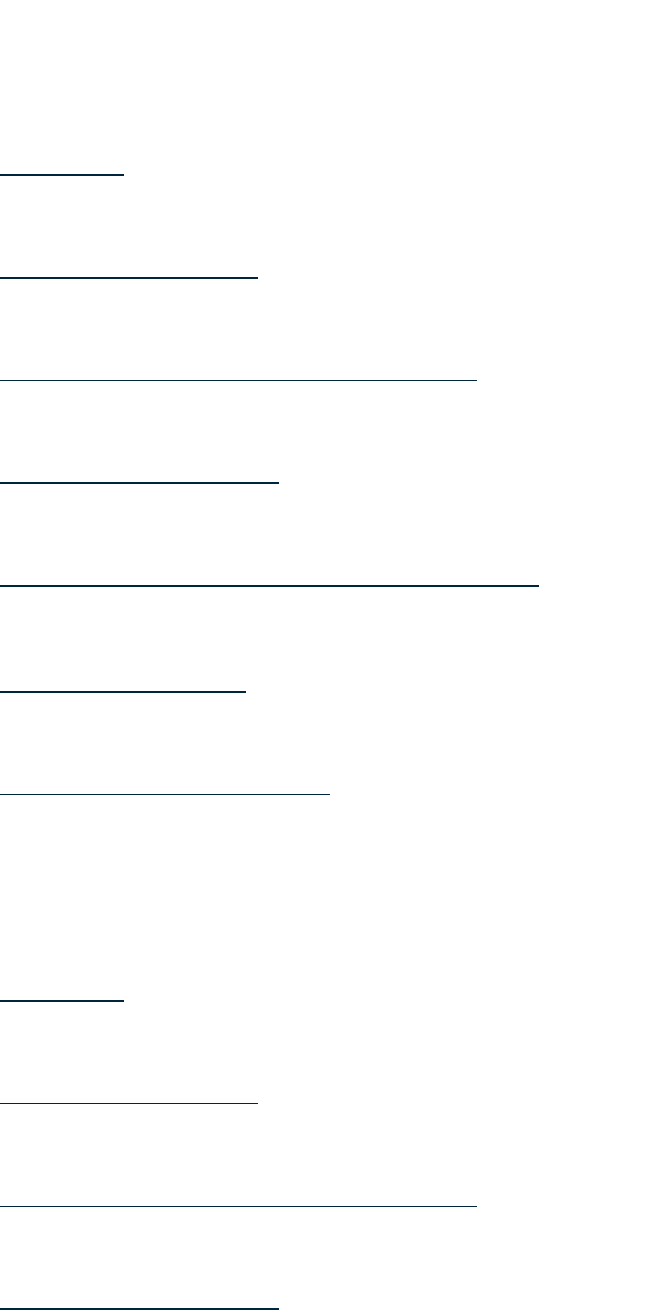
PROJECT INVENTORY
PUBLIC SECTOR WORKFORCE: OTHER
PROJECT
21ARPAEWR: Retention Bonus for Election Workers
FUNDING AMOUNT
$250,000
PROJECT EXPENDITURE CATEGORY
3.3 Public Sector Workforce: Other
PROJECT OVERVIEW
Elections Department essential worker premium retention pay.
PROJECT DEMOGRAPHIC DISTRIBUTION
This section is not applicable per Treasury Reporting Guidance.
USE OF EVIDENCE
This section is not applicable per Treasury Reporting Guidance.
PERFORMANCE REPORT
Output:
• Compensation for staff
Outcome:
• Number of staff recruited or retained
PROJECT
26ARPANRI: Nursing Retention Incentive
FUNDING AMOUNT
$554,000
PROJECT EXPENDITURE CATEGORY
3.3 Public Sector Workforce: Other
PROJECT OVERVIEW
85

PROJECT INVENTORY
Retention incentives to address retention issues for nurses who are not eligible for a sign-on
incentive. To persuade employees to remain with the Correctional Health as compared to other
employment options.
PROJECT DEMOGRAPHIC DISTRIBUTION
This section is not applicable per Treasury Reporting Guidance.
USE OF EVIDENCE
This section is not applicable per Treasury Reporting Guidance.
PERFORMANCE REPORT
Output:
• Number of senior-level student nurses provided incentives and training to complete
coursework: 55
Outcome:
• Success Rate of Incentive program defined as nurses hired within one year of completing
the incentive program: Goal is 100 percent.
PROJECT
86ARPAPHS: ARPA Other Public Health Services
FUNDING AMOUNT
$2,072,008
PROJECT EXPENDITURE CATEGORY
3.3 Public Sector Workforce: Other
PROJECT OVERVIEW
• Rent and infrastructure costs to support over 200 positions funded by the various
COVID grants to address the pandemic and provide communities in Maricopa County
with public health services.
• Maricopa County Department of Public Health has increased in size by over 250
positions to support ongoing pandemic response. In addition, the increased requirement
for social distancing, and alternate and telework schedules created the need to modify
and adapt space throughout the department. While many staff members have vacated
space to telework full time, the additional staffing required the leasing of an additional
10,700 square feet in its administration building. In addition to the office space, staff
require furniture and computer and phone equipment in order to perform their job
86

PROJECT INVENTORY
duties. A new platform for reserving desk space, Workspace Finder, was also
implemented as a solution to maximize space.
PROJECT DEMOGRAPHIC DISTRIBUTION
General Public
USE OF EVIDENCE
This section is not applicable per Treasury Reporting Guidance.
PERFORMANCE REPORT
Between July 1, 2021 and June 30, 2022, several new projects took place to support the
growing staff at MCDPH. The first involved acquiring and outfitting the second-floor rental
space at 4041 N Central Ave which added an additional 71 workspaces and was completed in
June 2022. While that was outfitted, the 11th floor was temporarily rented to provide an
additional 36 workspaces. The third project involved maximizing space at 4041 N Central Ave
through the implementation of a desk reservation software, Workspace Finder. This allowed for
nearly 100 existing workspaces to be adapted for a hybrid work environment and shared during
pandemic telework conditions. Beyond these projects, there are several additional efforts
across the Public Health department to update existing spaces and better meet the needs of
changed work conditions due to COVID-19 (e.g. docking stations and webcams) that will be
reported once complete. Timelines have been impacted due to supply chain issues.
Output:
• Number of workstations redeveloped or built for new staff: TBD
Outcome:
• Percentage of workstations that are equipped and ready to use: TBD
PUBLIC SECTOR CAPACITY: EFFECTIVE SERVICE DELIVERY
PROJECT
22HSARPAIT: Human Services IT Platform
FUNDING AMOUNT
$2,000,000
PROJECT EXPENDITURE CATEGORY
3.4 Public Sector Capacity: Effective Service Delivery
PROJECT OVERVIEW
87

PROJECT INVENTORY
The County is using funds to design and structure a database system and client-facing portal for
all its Human Services programs including workforce development, early education and
childcare, community services such as rental and utility assistance, and more. This IT system will
provide County Human Services Department staff with the ability to manage client applications
and communications, track performance measures and expenditures, reduce paperwork, and
improve customer service overall. Additionally, this system will allow County Human Services
Department clients to apply for services electronically and quickly which will help address
barriers many clients face during the COVID-19 pandemic. Finally, the data collected from this
IT system will assist County administration and leadership in strategic planning for services.
PROJECT DEMOGRAPHIC DISTRIBUTION
This section is not applicable per Treasury Reporting Guidance.
USE OF EVIDENCE
This section is not applicable per Treasury Reporting Guidance.
PERFORMANCE REPORT
Output:
• Number of applications submitted through the Client Portal.
Outcome:
• Availability and accessibility of data through views, charts, and dashboards and its impact
on the organization’s decision-making processes.
• Impact of the finance module that has been built out in Dynamics.
PROJECT
86ARPAPHIT: Public Health IT Platform
FUNDING AMOUNT
$2,000,000
PROJECT EXPENDITURE CATEGORY
3.4 Public Sector Capacity: Effective Service Delivery
PROJECT OVERVIEW
• Maricopa County Public Health seeks to build an EDW platform to modernize
technology, connect disparate systems, and allow health care providers to leverage the
consolidated data and insights from that data.
• This project will involve purchasing and implementing 1) a vaccine management system
(VMS) to provide real-time information that will assist in the vaccine distribution and
88

PROJECT INVENTORY
administration for populations across Maricopa County 2) an asset management and
tracking system along with staff to develop and support processes, supply rotation,
audit, reporting and property accountability and 3) a Data Warehouse along with
ongoing annual support costs. All projects will also involve collaboration across
departmental divisions and with community stakeholders.
• These projects will help facilitate the integration of data to best leverage public health
resources, drive public health strategy and address community health needs.
PROJECT DEMOGRAPHIC DISTRIBUTION
• General Population
• Historically underserved communities face increased barriers to accessing quality
healthcare, including vaccinations. Information from this system will be used alongside
geographic and demographic data to guide immunization and outreach activities with a
focus on hard-to-reach and vulnerable communities.
USE OF EVIDENCE
This section is not applicable per Treasury Reporting Guidance.
PERFORMANCE REPORT
This project remains in early planning stages and key performance indicators are in
development.
Output:
• TBD
Outcome:
• TBD
PROJECT
86ARPAPHI: Public Health Informatics System Improvements
FUNDING AMOUNT
$2,201,000
PROJECT EXPENDITURE CATEGORY
3.4 Public Sector Capacity: Effective Service Delivery
PROJECT OVERVIEW
• Throughout the COVID-19 pandemic, teams of MCDPH epidemiologists and data
specialists developed near-real-time public health data reports and dashboards.
Numerous challenges were identified due to antiquated data collection, integration, and
89

PROJECT INVENTORY
analytical systems and processes. This program supports MCDPH’s ability to modernize
technology and implement solutions to support accessible public health data for the
community. It will improve the capacity of MCDPH to monitor community health,
provide situational awareness to Maricopa County Leadership and respond to future
public health emergencies.
• MCDPH also seeks to increase data quality by improving sensitive data collection from
Maricopa County community members who were disproportionately impacted by the
pandemic.
PROJECT DEMOGRAPHIC DISTRIBUTION
General Public
USE OF EVIDENCE
This section is not applicable per Treasury Reporting Guidance.
PERFORMANCE REPORT
This program has not started. Performance measures are in development.
Output:
• TBD
Outcome:
• TBD
PUBLIC SECTOR CAPACITY: ADMINISTRATIVE NEEDS
PROJECT
ARPACRCS: Criminal Case Staffing
FUNDING AMOUNT
$6,298,580
PROJECT EXPENDITURE CATEGORY
3.5 Public Sector Capacity: Administrative Needs
PROJECT OVERVIEW
• The Maricopa County Attorney’s Office will use ARPA monies to assist in prosecuting
increased homicide and family violence crimes committed in Maricopa County
throughout the COVID pandemic. Homicides, family violence, and other violent crimes
have increased by more than 32% since the COVID-19 pandemic began in 2020. Eight
attorneys, two paralegals, and two legal support specialists will be hired to facilitate
90

PROJECT INVENTORY
moving these serious crimes expeditiously through the court processes. Work will be
dedicated explicitly to prosecuting homicides and family violence crimes.
• The Public Defense System will use ARPA monies to represent clients charged with
homicide and family violence crimes committed in Maricopa County throughout the
COVID pandemic. Nine attorneys, three investigators, three mitigations specialist, three
paralegals, and three legal secretaries will be hired to facilitate the moving of these cases
through the court process. Costs charged to ARPA funds will be exclusively for
homicides and family violence crimes occurring in Maricopa County during the COVID
pandemic.
• The approximate timeline is November 2021 through June 2023.
PROJECT DEMOGRAPHIC DISTRIBUTION
General Public
PERFORMANCE REPORT
Maricopa County Attorney
Output:
• Prosecution of increased numbers of homicide and family violence crimes.
Outcome:
• Reduction in the number of cases awaiting resolution.
Public Defense
Output:
• Provide representation to defendants charged with non-capital murder with staff
attorneys.
Outcome:
• Percent of non-capital defendants represented by staff attorneys.
PREMIUM PAY
PUBLIC SECTOR EMPLOYEES
PROJECT
PMPY: Hazard Pay
FUNDING AMOUNT
$16,725,247
PROJECT EXPENDITURE CATEGORY
91

PROJECT INVENTORY
4.1 Public Sector Employees
PROJECT OVERVIEW
• Provide premium pay for critical County front line workers specifically for Adult
Probation, Correctional Health, Election Workers, Juvenile Probation, Superior Court,
and Sheriff Detention employees, to the extent that they work on the COVID-19
response.
• Average number of employees receiving Hazard Pay is 2,788 including Adult Probation,
Correctional Health, Election Workers, Juvenile Probation, Superior Court, and Sheriff
Detention employees.
• The average dollar amount given for Hazard Pay is $4.00-$5.00 per hour.
PROJECT DEMOGRAPHIC DISTRIBUTION
This section is not applicable per Treasury Reporting Guidance.
USE OF EVIDENCE
This section is not applicable per Treasury Reporting Guidance.
PERFORMANCE REPORT
Output:
• Monies used to provide premium pay for County front line workers specifically Adult
Probation, Correctional Health, Election Workers, Juvenile Probation, Superior Court,
and Sheriff Detention employees to the extent in which they work with COVID-19
response.
Outcome:
• Number of County front line workers receiving Hazard Pay: 2,788
INFRASTRUCTURE
WATER AND SEWER
CLEAN WATER: OTHER SEWER INFRASTRUCTURE
PROJECT
SEWR: Parks Waste Water ARPA
FUNDING AMOUNT
$3,000,000
92

PROJECT INVENTORY
PROJECT EXPENDITURE CATEGORY
5.5 Clean Water: Other Sewer Infrastructure
PROJECT OVERVIEW
• Provide wastewater infrastructure improvements at Lake Pleasant County Park.
• Lake Pleasant evapo-transpiration beds removal and reinstallation of new components.
o Projected/Actual construction start date: 7/2021
o Projected/Actual initiation of operations: 6/2024
o Location: Latitude: 33°51’52.1” N, Longitude: 112° 19’2.2" W
o NPDES permit number – P-100602 (ADEQ Aquifer Protection Permit)
o PWS ID number: N/A
PROJECT DEMOGRAPHIC DISTRIBUTION
No specific demographic. Park wastewater infrastructure improvements is to provide service
for all Lake Pleasant visitors.
PERFORMANCE REPORT
Output:
• To provide Lake Pleasant evapo-transpiration beds removal and reinstallation of new
components.
Outcome:
• Number of evapo-transpiration beds completed.
DRINKING WATER: OTHER WATER INFRASTRUCTURE
PROJECT
22HSARPAWI: County Island(s) Water Infrastructure
FUNDING AMOUNT
$5,000,000
PROJECT EXPENDITURE CATEGORY
5.15 Drinking Water: Other Water Infrastructure
PROJECT OVERVIEW
Maricopa County has identified a number of unincorporated areas where the water delivery
infrastructure does not exist. These areas continue to utilize groundwater resources through a
well or by hauling water into the area. Protecting water resources is vital for the residents of
93

PROJECT INVENTORY
Maricopa County. The County will utilize the funding to provide water infrastructure and
project management.
PROJECT DEMOGRAPHIC DISTRIBUTION
This section is not applicable per Treasury Reporting Guidance.
USE OF EVIDENCE
This section is not applicable per Treasury Reporting Guidance.
PERFORMANCE REPORT
Output:
• Provide drinking water to areas of rural and unincorporated Maricopa County that do
not have secured drinking water.
Outcome:
• Number of residents the infrastructure provides with drinking water.
PROJECT
WATR: Parks Drinking Water ARPA
FUNDING AMOUNT
$5,850,000
PROJECT EXPENDITURE CATEGORY
5.15 Drinking Water: Other Water Infrastructure
PROJECT OVERVIEW
Provide drinking water infrastructure improvements at County Parks.
PERFORMANCE REPORT
Output:
• Provide safe drinking water for the 1.1 million visitors to the parks listed.
Outcome:
• Number of projects completed.
• Number of parks providing safe drinking water for visitors.
WATER AND SEWER: OTHER
PROJECT
95ARPAGBSW: Gila Bend Sewer
94

PROJECT INVENTORY
FUNDING AMOUNT
$500,000
PROJECT EXPENDITURE CATEGORY
5.18 Water and Sewer: Other
PROJECT OVERVIEW
Maricopa County will partner with the Town of Gila Bend to replace a Water/Sewer line that
had been severely damaged during an August 2021 flood. This sewer line is critical to all
residents of Gila Bend and Gila Bend has been attempting to take various measures to support
residents until the sewer line can be repaired. However, Gila Bend requires County assistance
and funding to repair this sewer line. Maricopa County strives to assist its partner agencies in
public infrastructure emergencies such as damaged/broken sewer lines. The goal is to repair
this sewer line by March 2023.
PROJECT DEMOGRAPHIC DISTRIBUTION
Not applicable for this project.
USE OF EVIDENCE
This section is not applicable per Treasury Reporting Guidance.
PERFORMANCE REPORT
Output:
• Monies provided to fix sewer line.
Outcome:
• Number of residents on qualified census tracts served with repaired water/sewer line.
BROADBAND
BROADBAND: OTHER PROJECTS
PROJECT
95ARPABRBD: Broadband Other Projects
FUNDING AMOUNT
$35,100,000
95

PROJECT INVENTORY
PROJECT EXPENDITURE CATEGORY
5.21 Broadband: Other Projects
PROJECT OVERVIEW
• Delivery of, or enhancements to, broadband services throughout Maricopa County.
• This project was authorized by the Maricopa County Board of Supervisors in late June
2022. Implementation details and specific project outcomes are not yet determined.
PROJECT DEMOGRAPHIC DISTRIBUTION
This section is not applicable per Treasury Reporting Guidance.
USE OF EVIDENCE
This section is not applicable per Treasury Reporting Guidance.
PERFORMANCE REPORT
Output:
• TBD
Outcome:
• TBD
REVENUE REPLACEMENT
PROVISION OF GOVERNMENT SERVICES
PROJECT
47ARPARVRP: Revenue Replacement of Government Services
FUNDING AMOUNT
$10,000,000
PROJECT EXPENDITURE CATEGORY
6.1 Provision of Government Services
PROJECT OVERVIEW
County Construction in Process (CIP) Projects for Government Services.
PROJECT DEMOGRAPHIC DISTRIBUTION
This section is not applicable per Treasury Reporting Guidance.
96
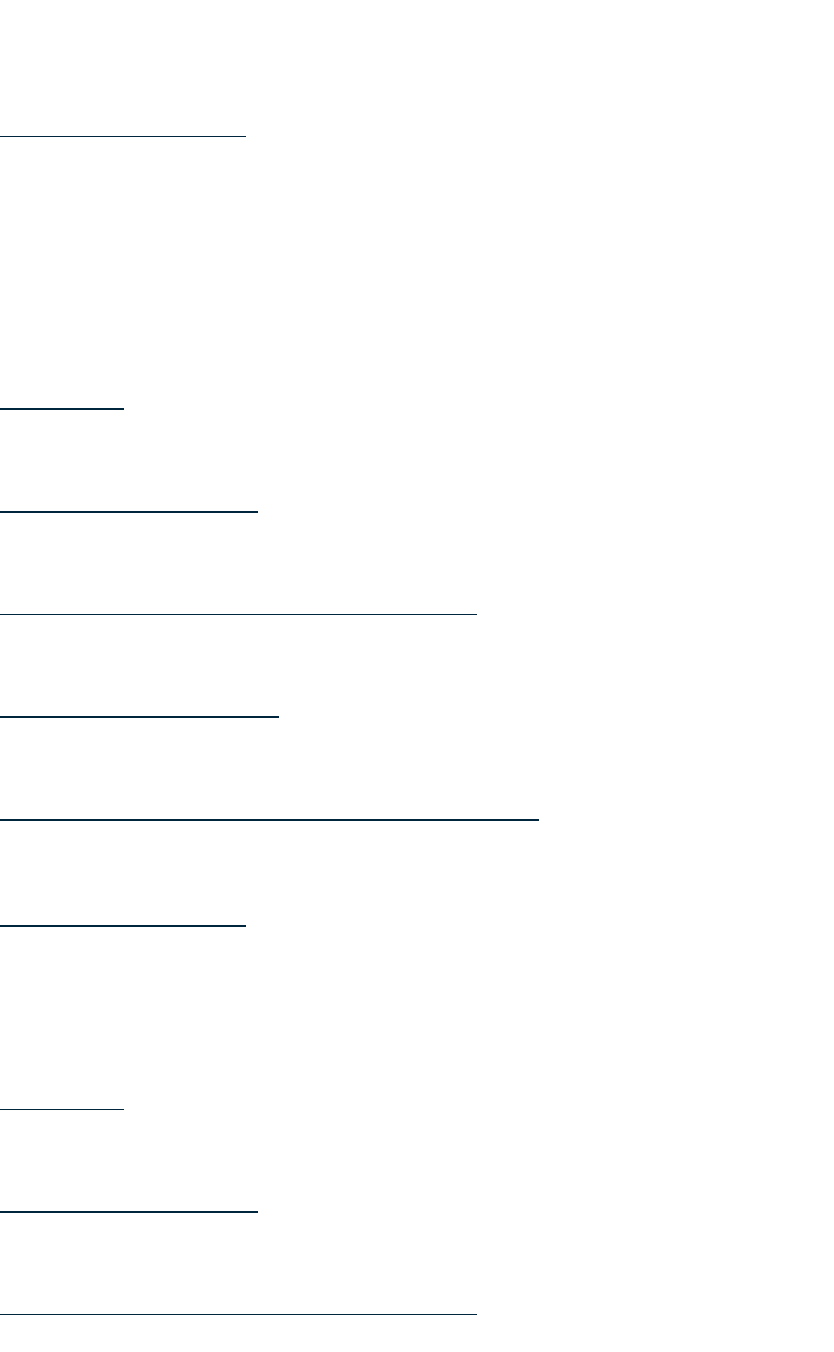
PROJECT INVENTORY
USE OF EVIDENCE
This section is not applicable per Treasury Reporting Guidance.
ADMINISTRATIVE
ADMINISTRATIVE EXPENSES
PROJECT
ARPAOV: County Support
FUNDING AMOUNT
$1,977,500
PROJECT EXPENDITURE CATEGORY
7.1 Administrative Expenses
PROJECT OVERVIEW
County Administrative Support such as oversight, accounting and reporting.
PROJECT DEMOGRAPHIC DISTRIBUTION
This section is not applicable per Treasury Reporting Guidance.
USE OF EVIDENCE
This section is not applicable per Treasury Reporting Guidance.
TRANSFERS TO OTHER UNITS OF GOVERNMENT
PROJECT
955ARPAFD: Support for Fire Districts
FUNDING AMOUNT
$5,000,000
PROJECT EXPENDITURE CATEGORY
7.2 Transfers to Other Units of Government
97
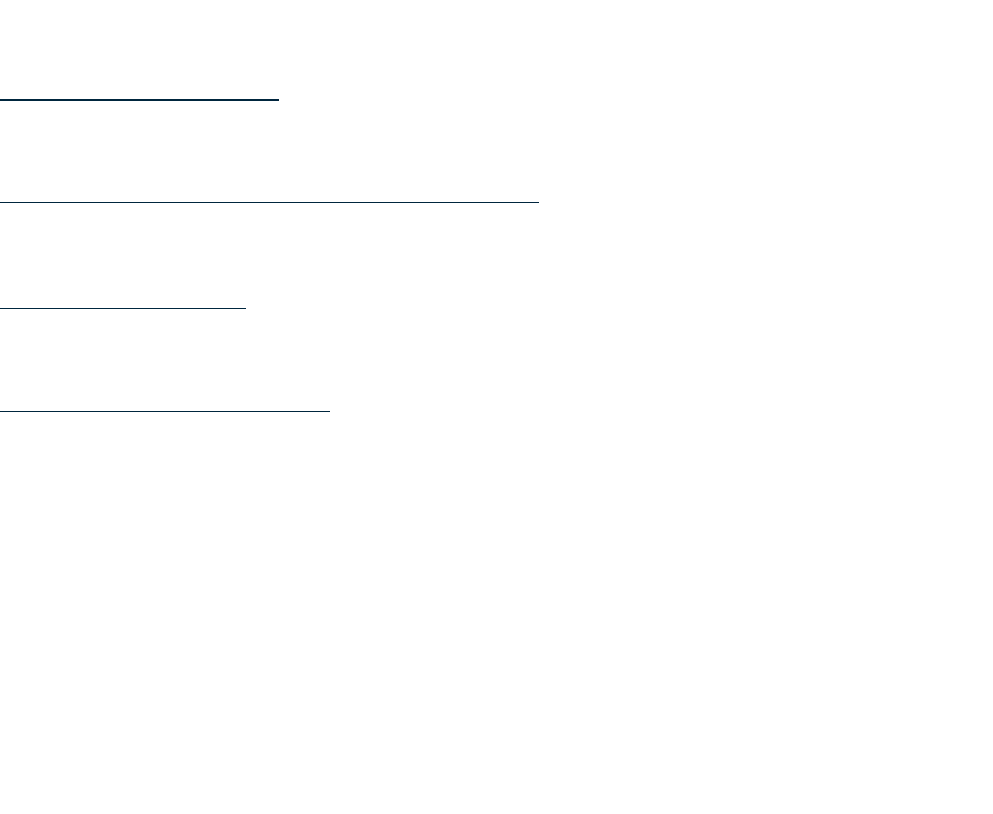
PROJECT INVENTORY
PROJECT OVERVIEW
This project is supporting outlying area public health responses through several fire districts.
PROJECT DEMOGRAPHIC DISTRIBUTION
This section is not applicable per Treasury Reporting Guidance.
USE OF EVIDENCE
This section is not applicable per Treasury Reporting Guidance.
PERFORMANCE REPORT
Output:
• Money provided to Fire Districts throughout the County.
Outcome:
• Five outlying fire districts in Maricopa County have been reimbursed for employee paid
leave time associated with COVID-related absences from work. Additionally, they have
been offered vaccine incentives. Also, payroll costs for staff substantially dedicated to
the COVID-19 response. These districts are:
o Arizona Fire & Medical Authority
o Buckeye Valley Fire District
o Daisy Mountain Fire District
o Harquahala Valley Fire District and
o Rio Verde Fire District
98

MARICOPA COUNTY
MARICOPA.GOV
